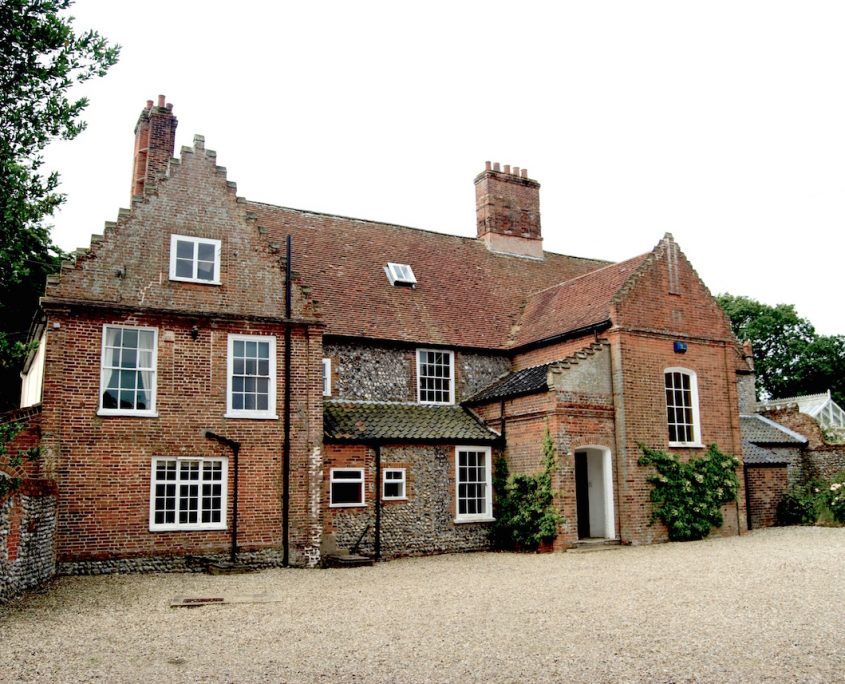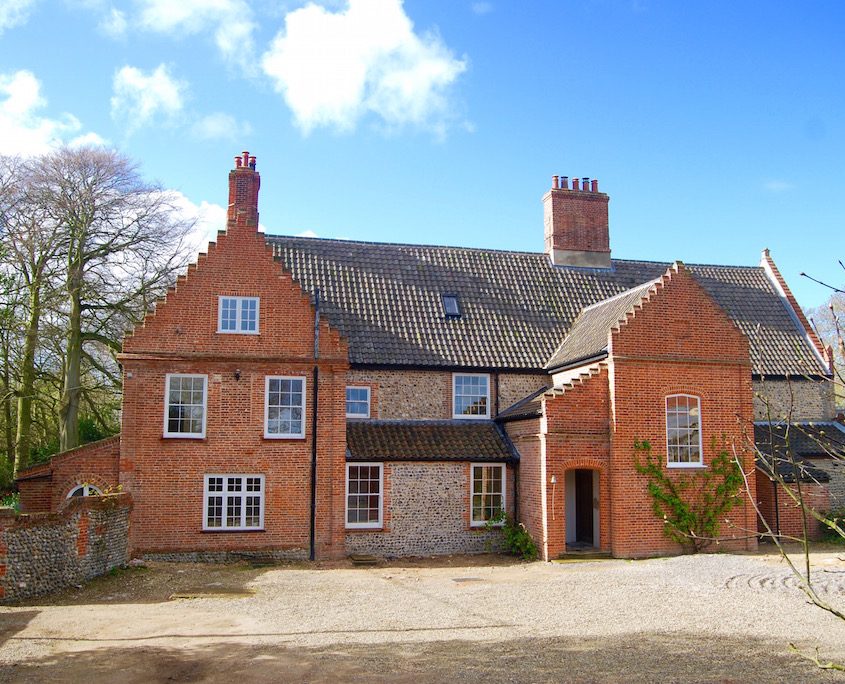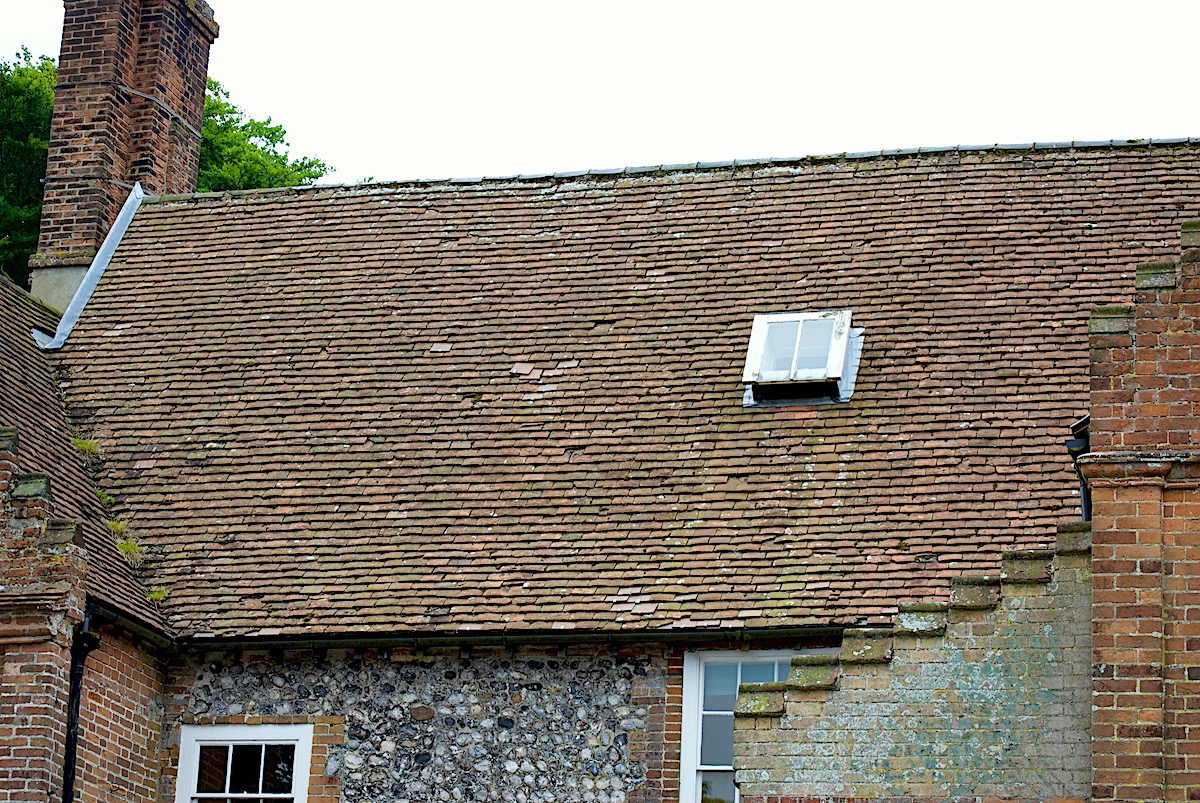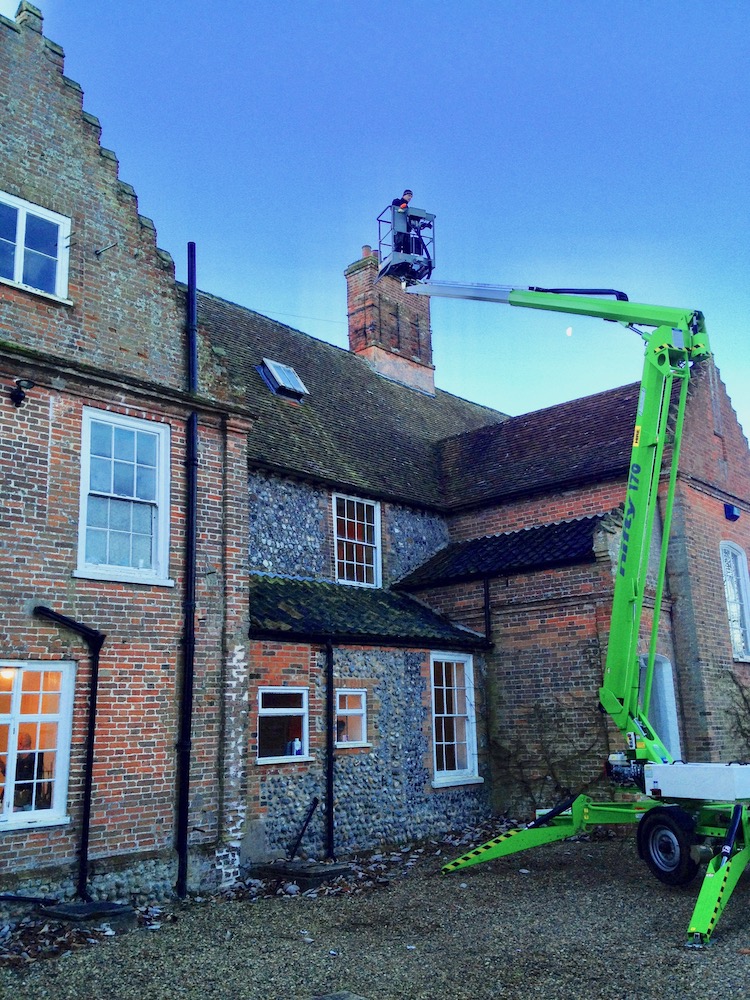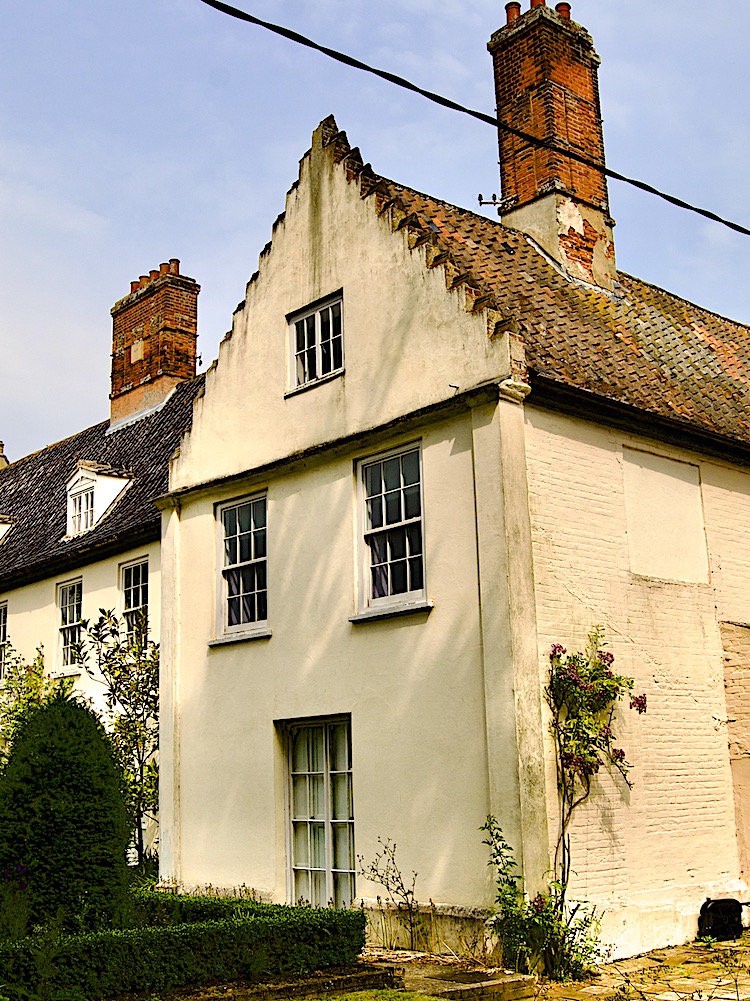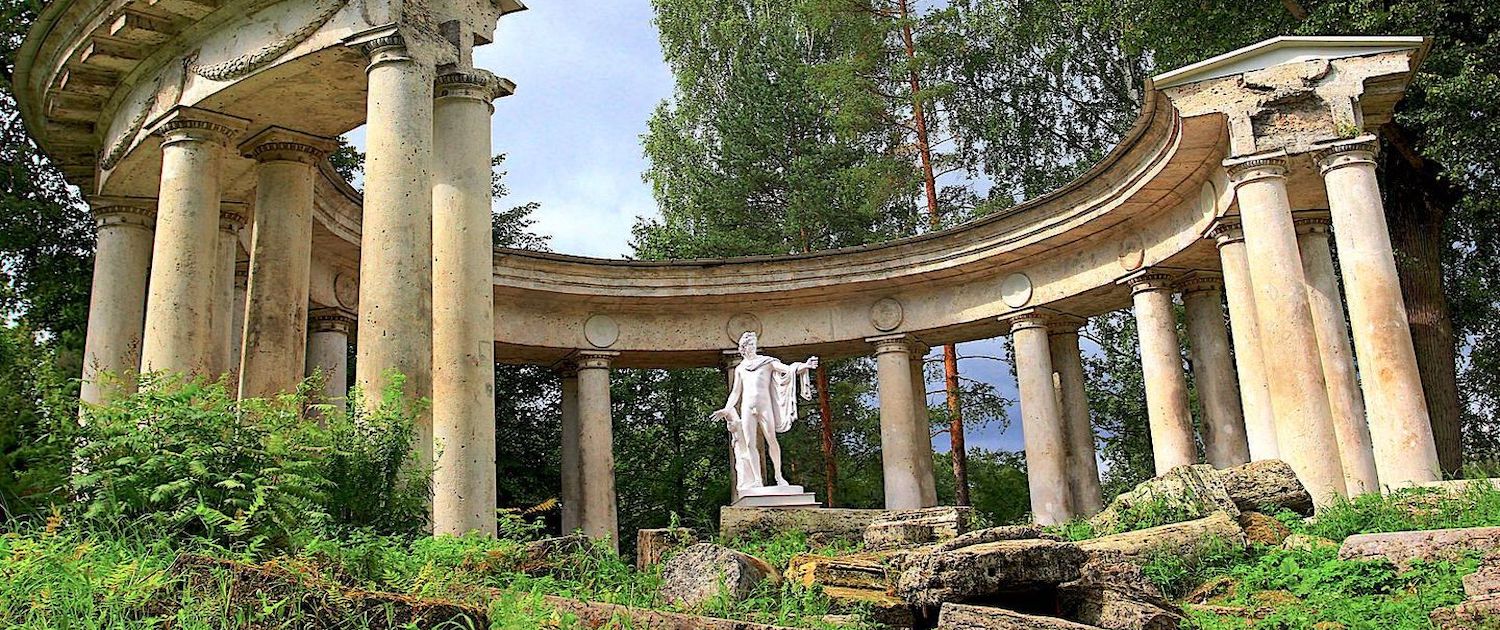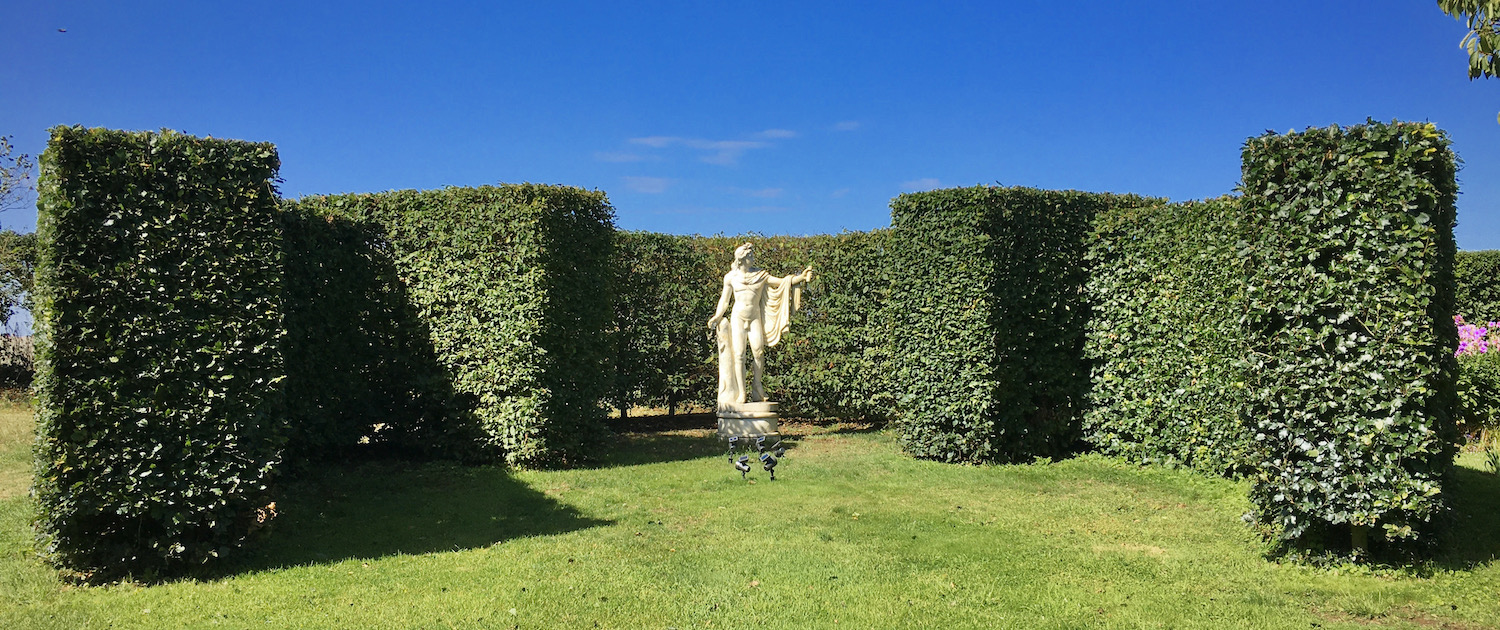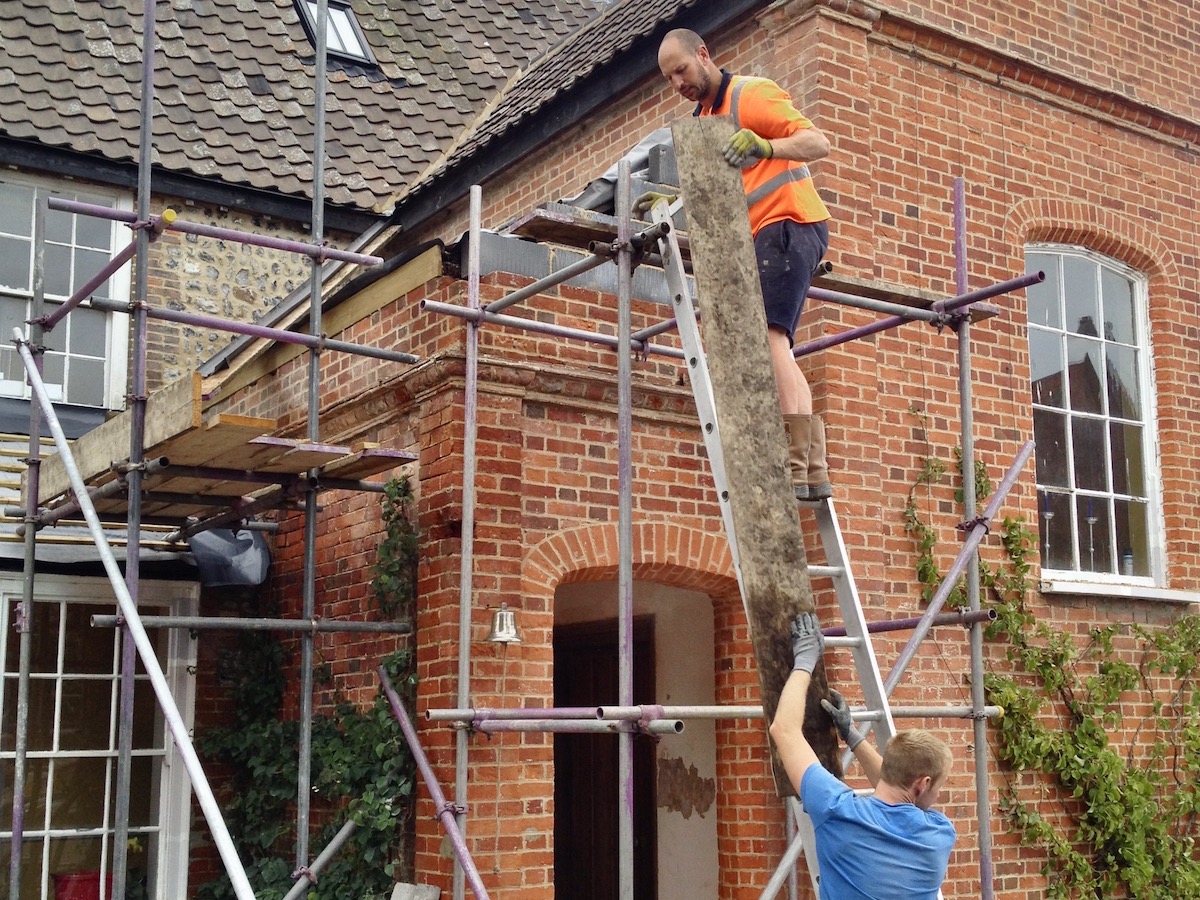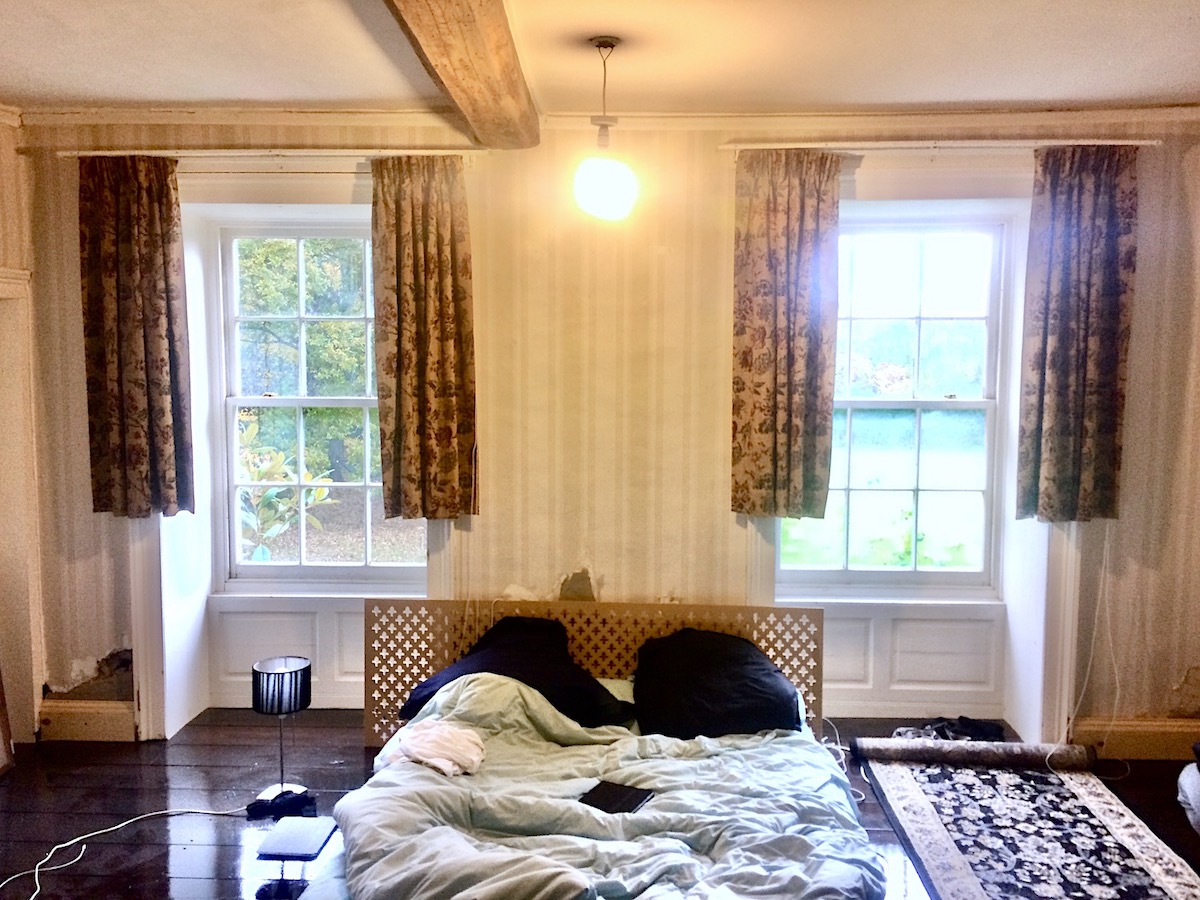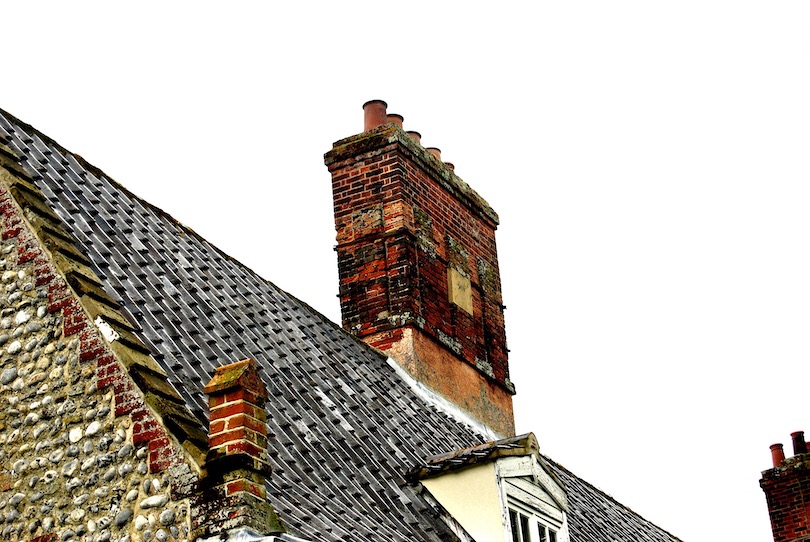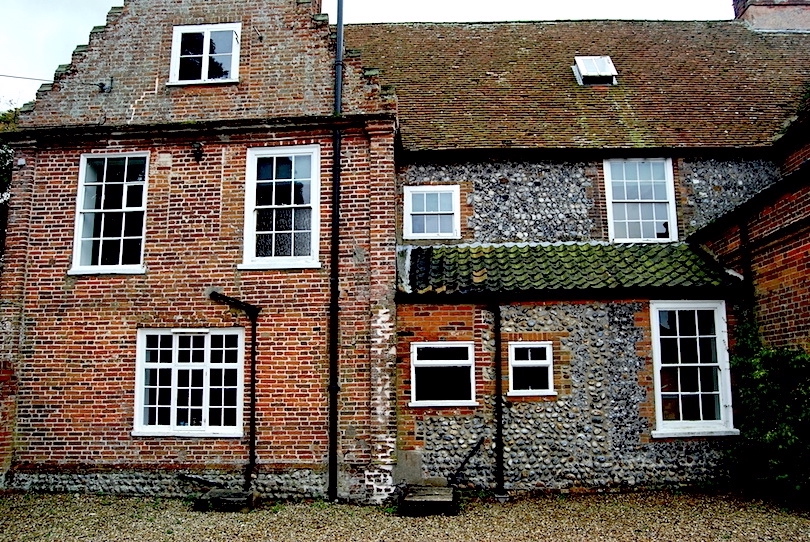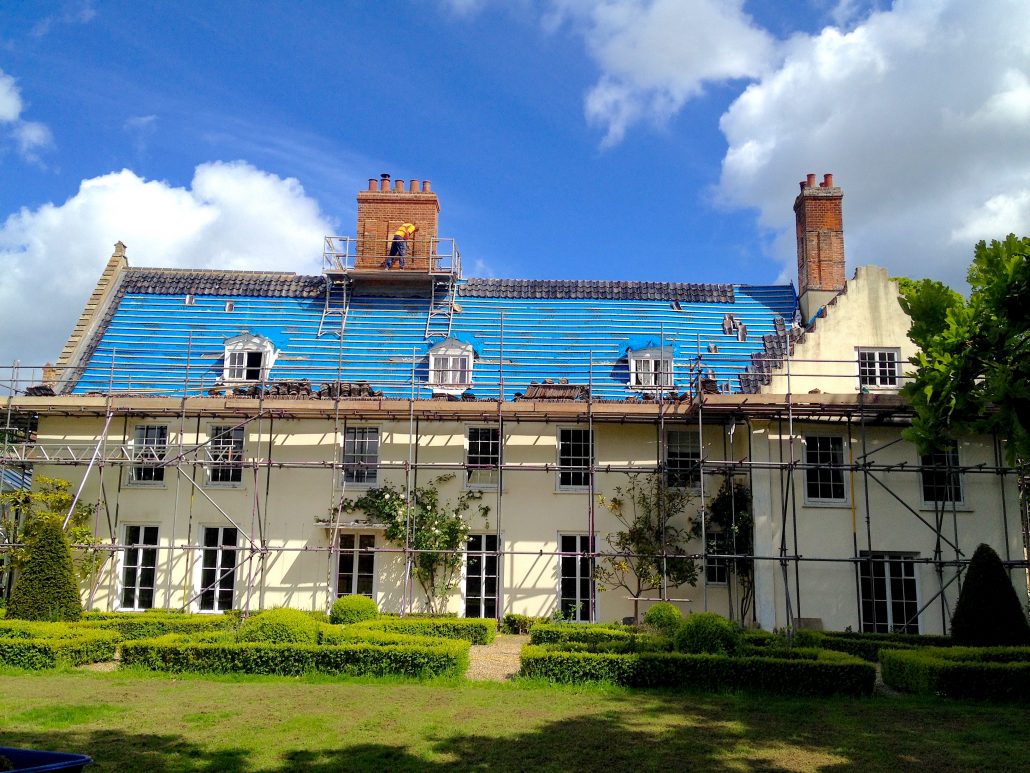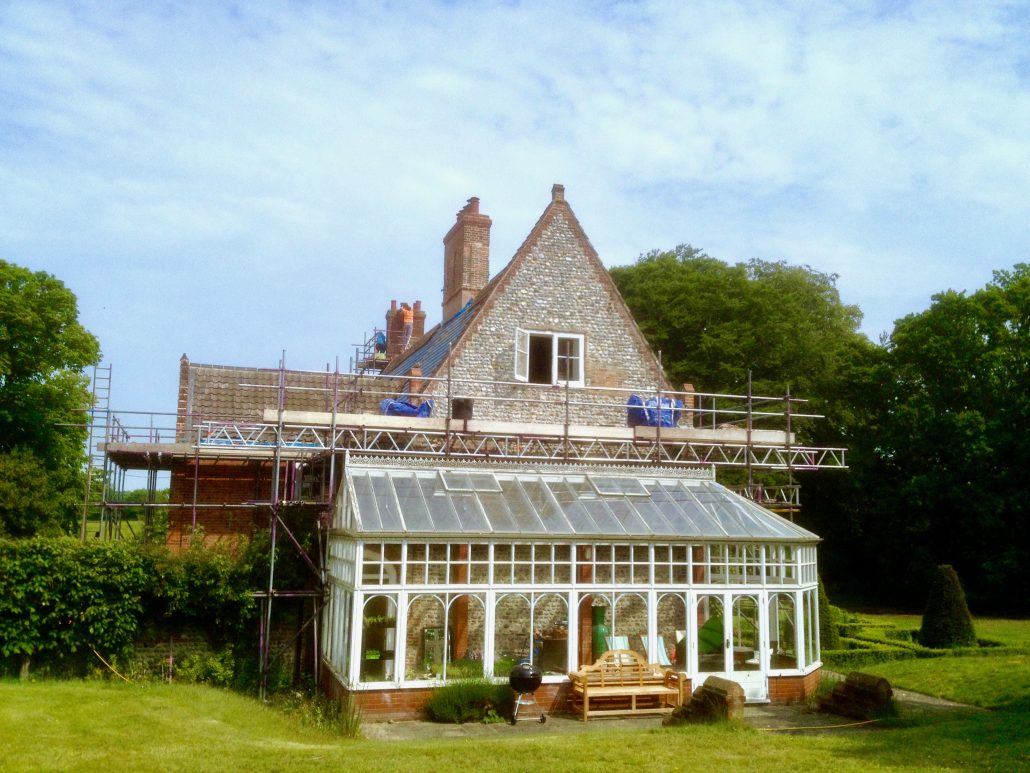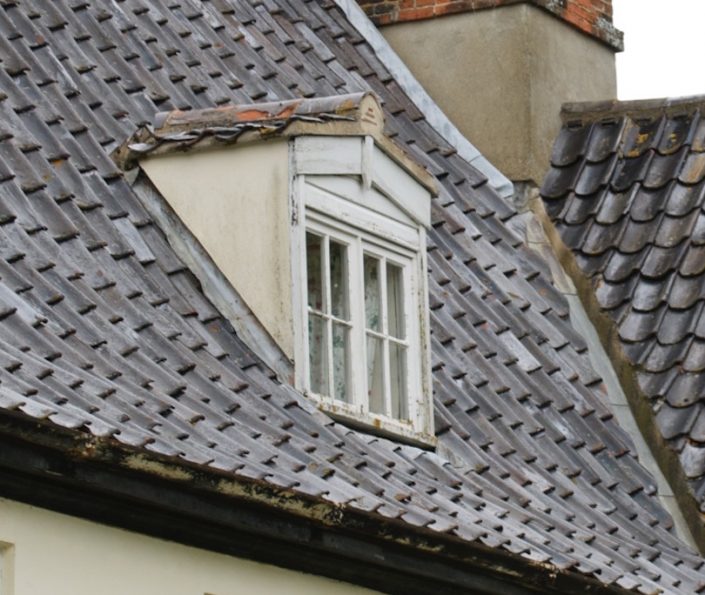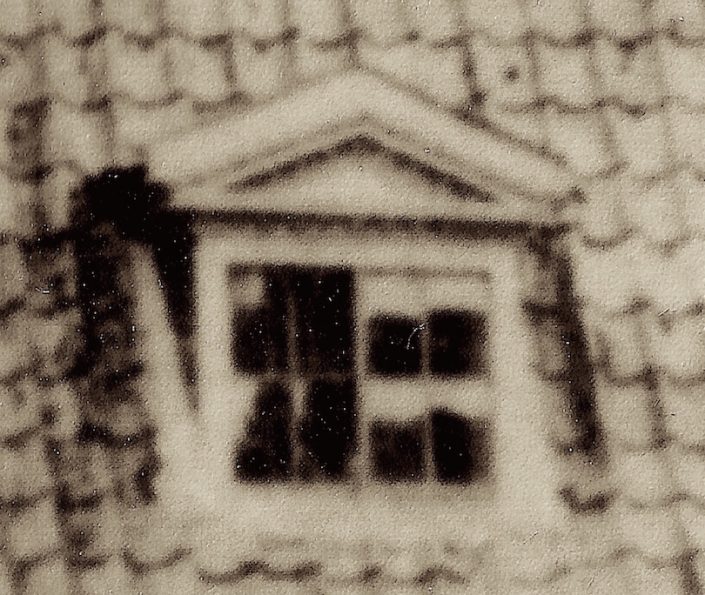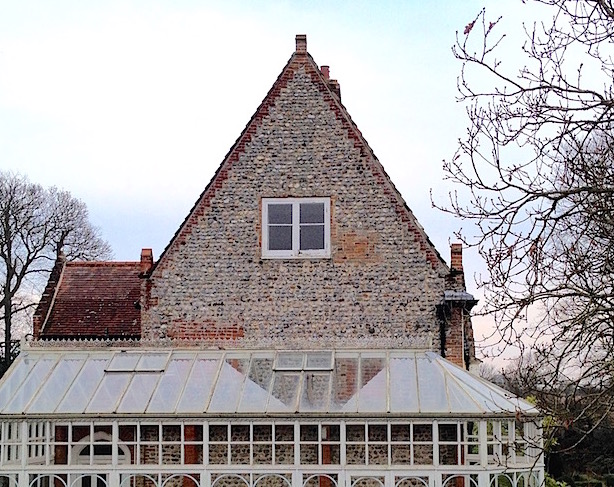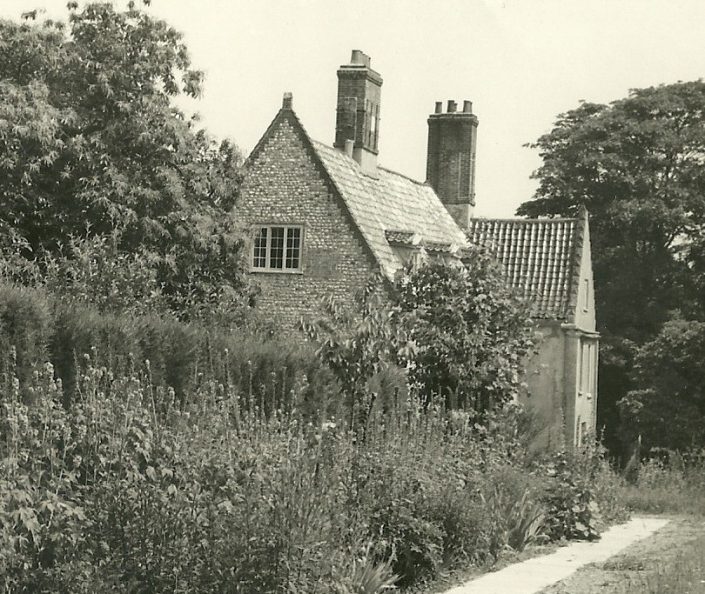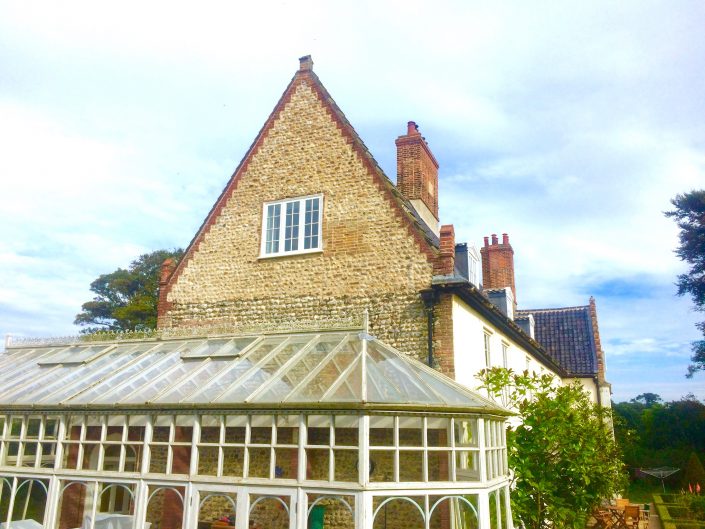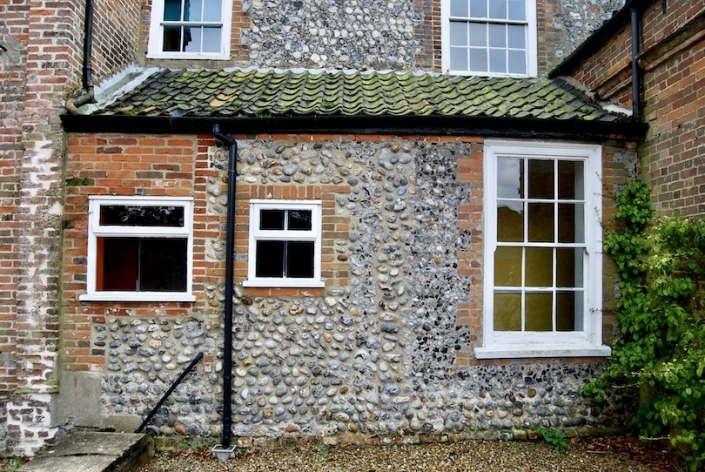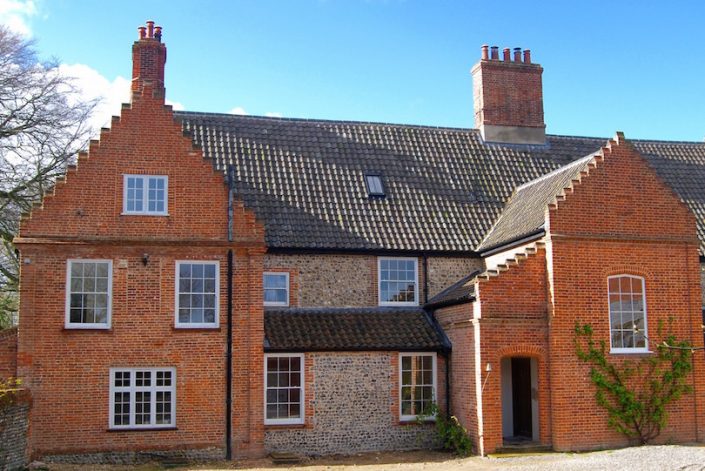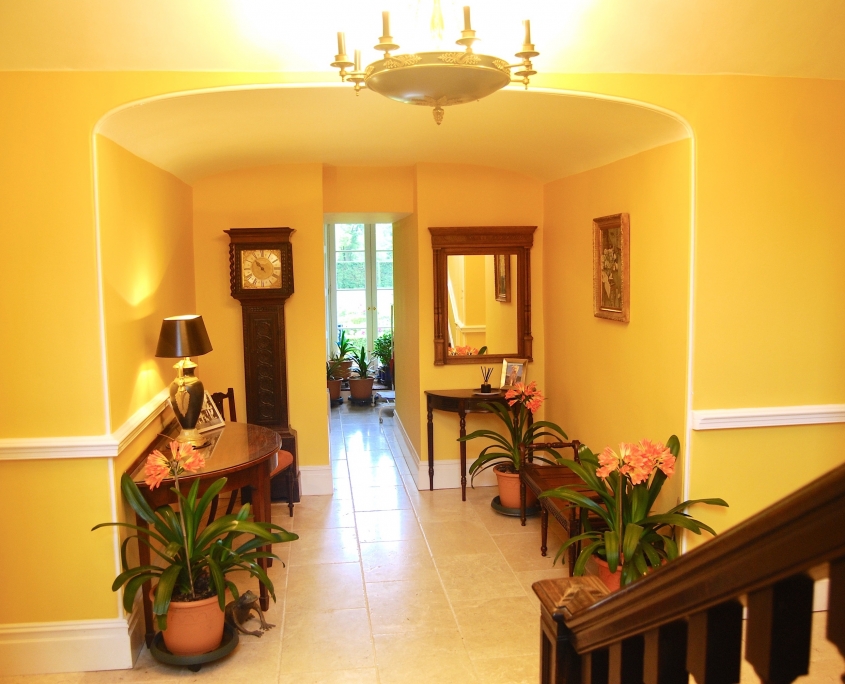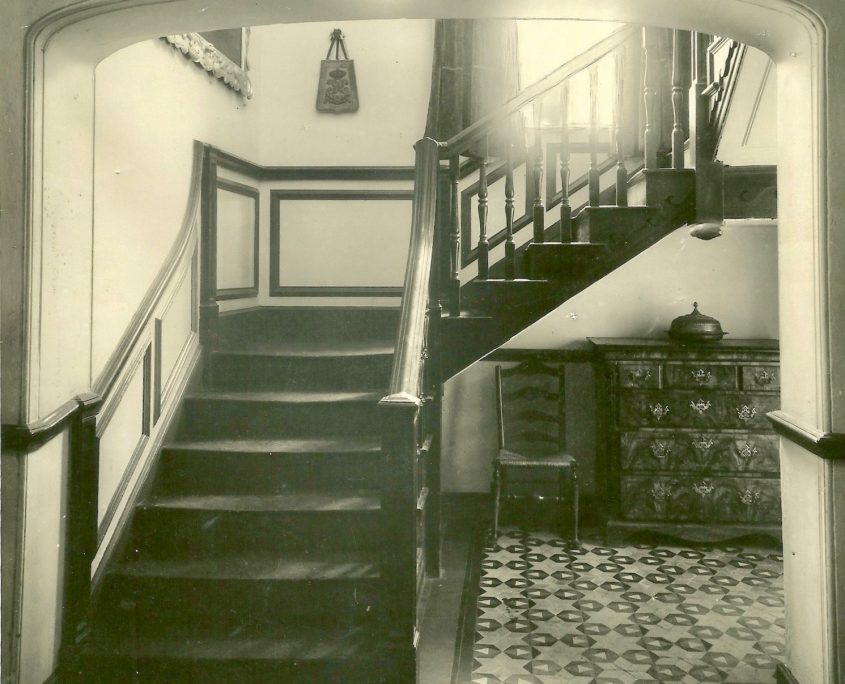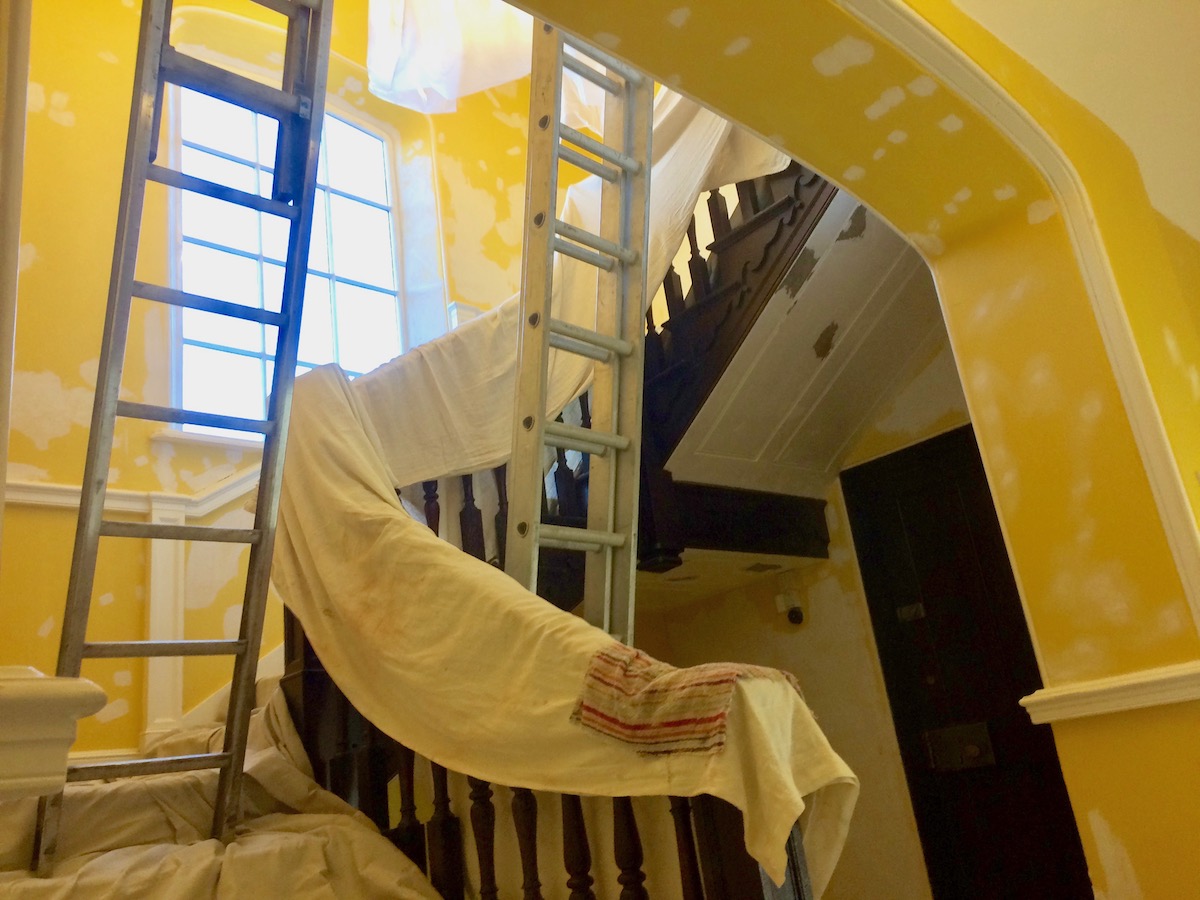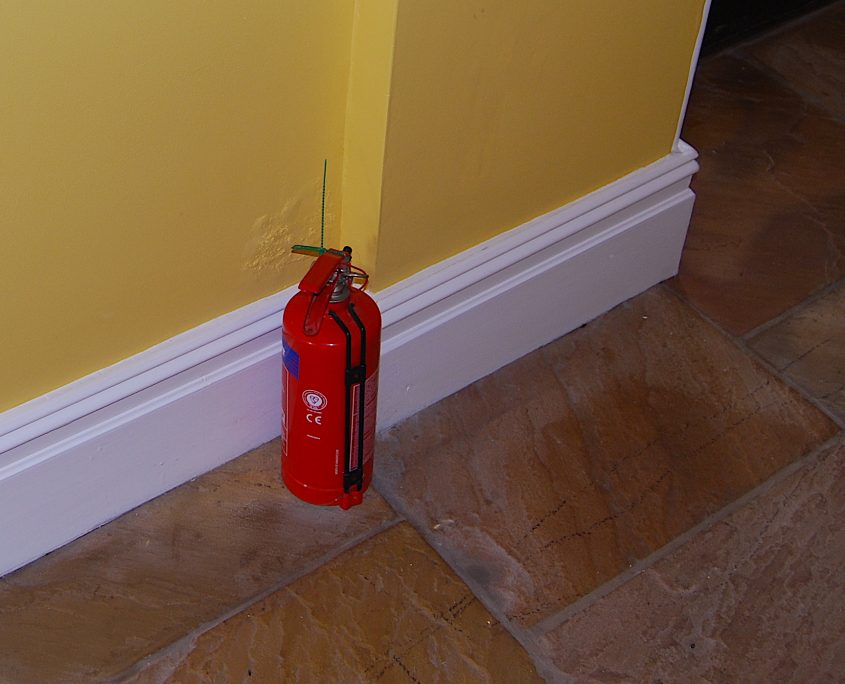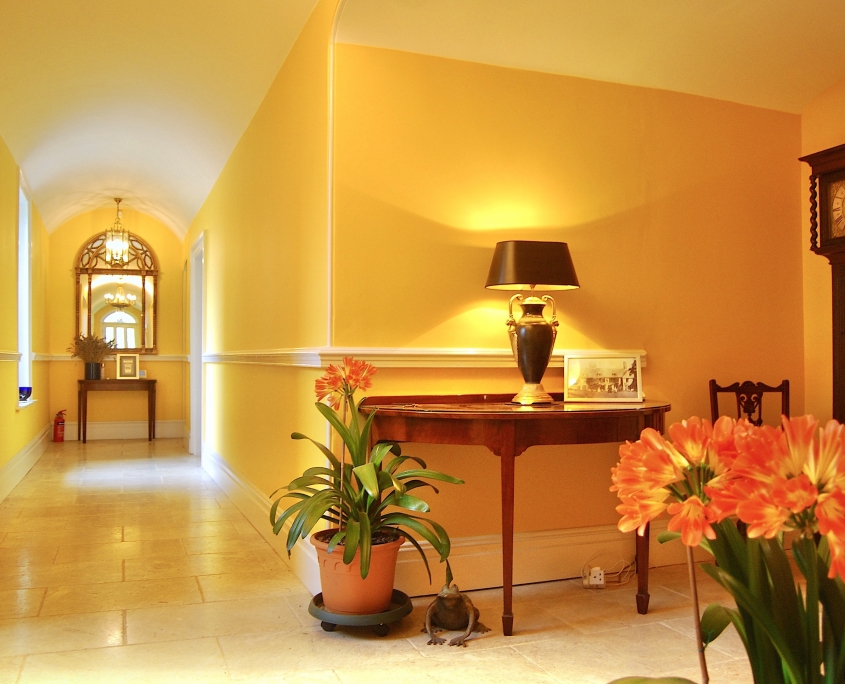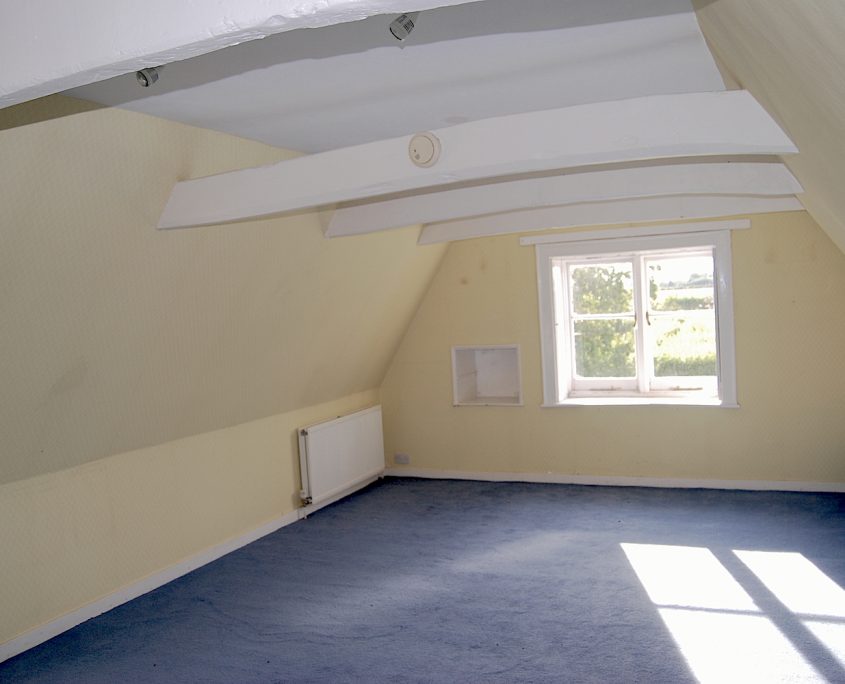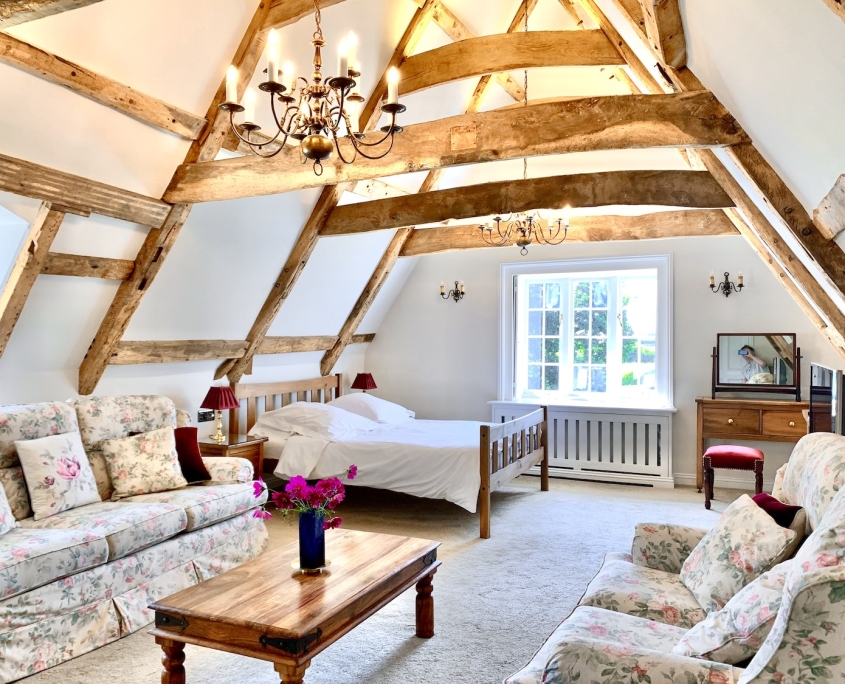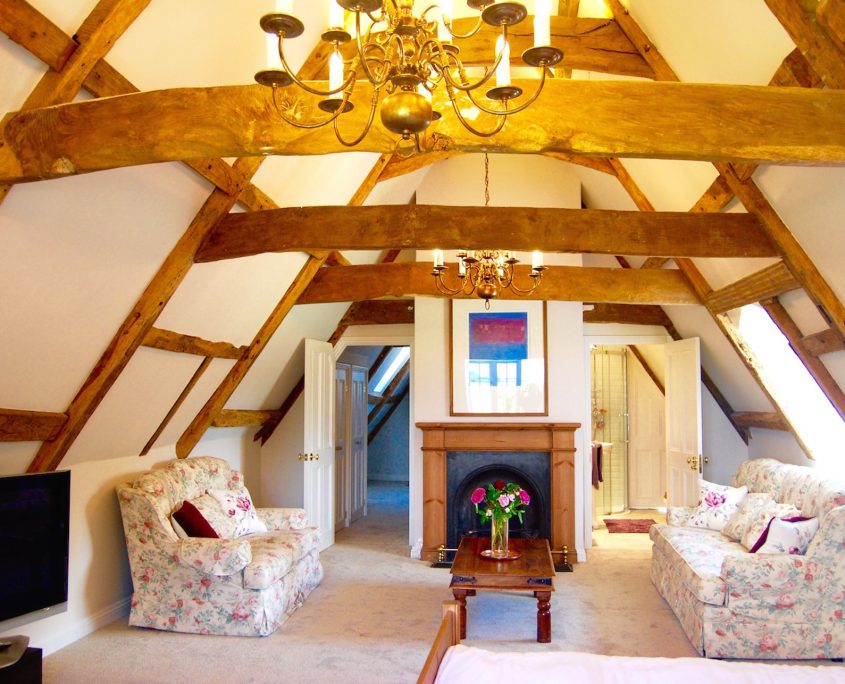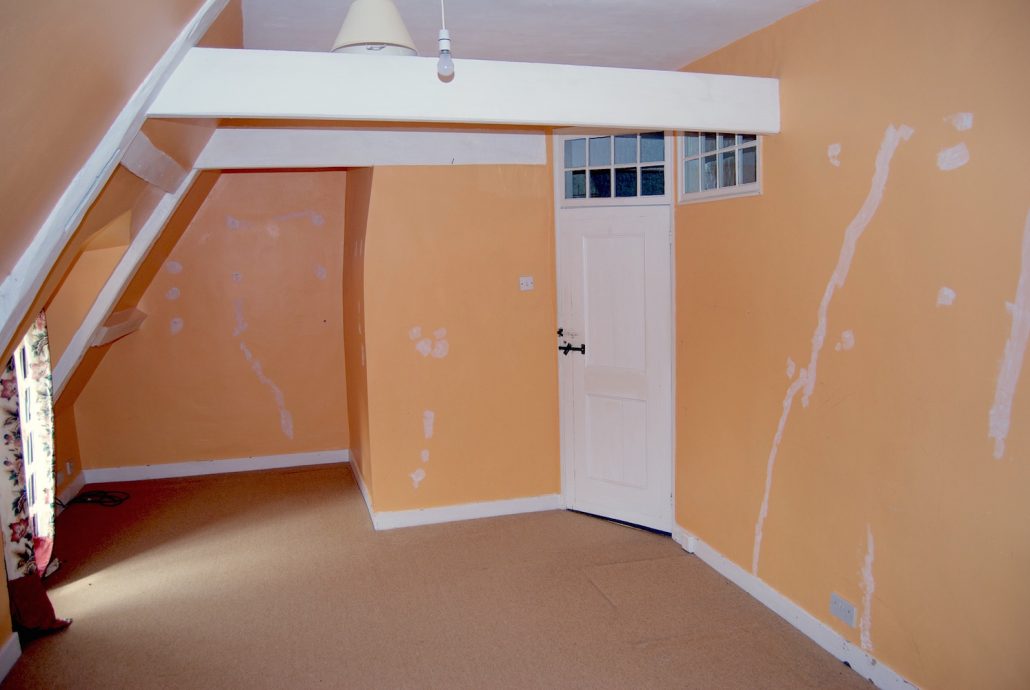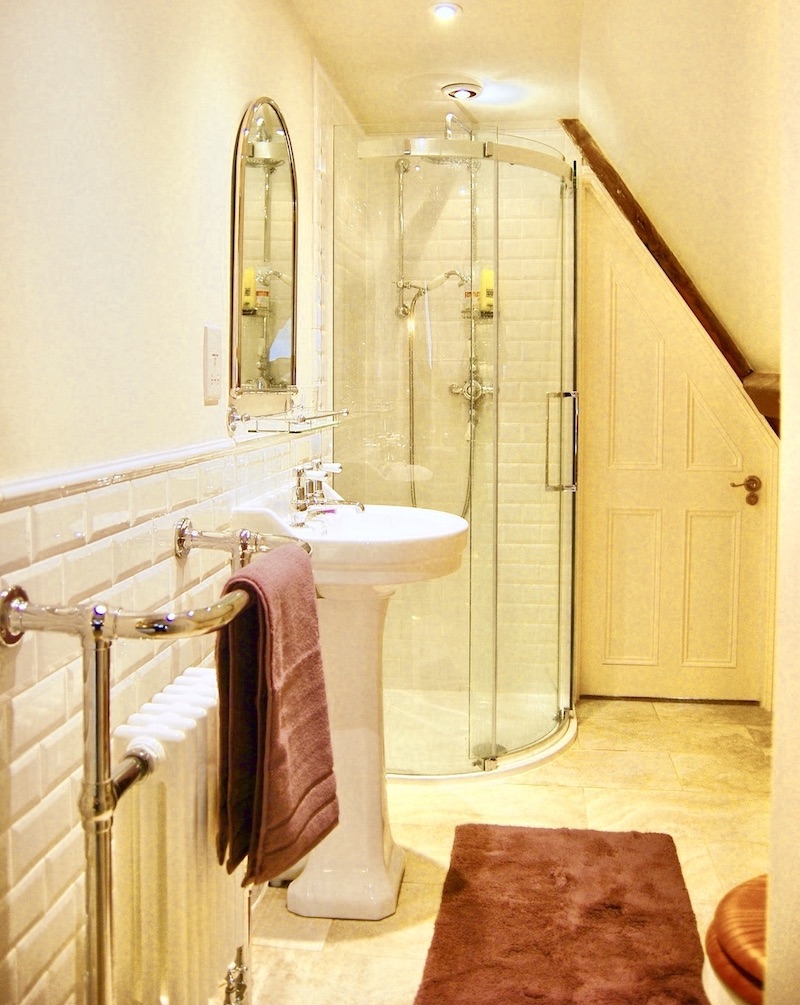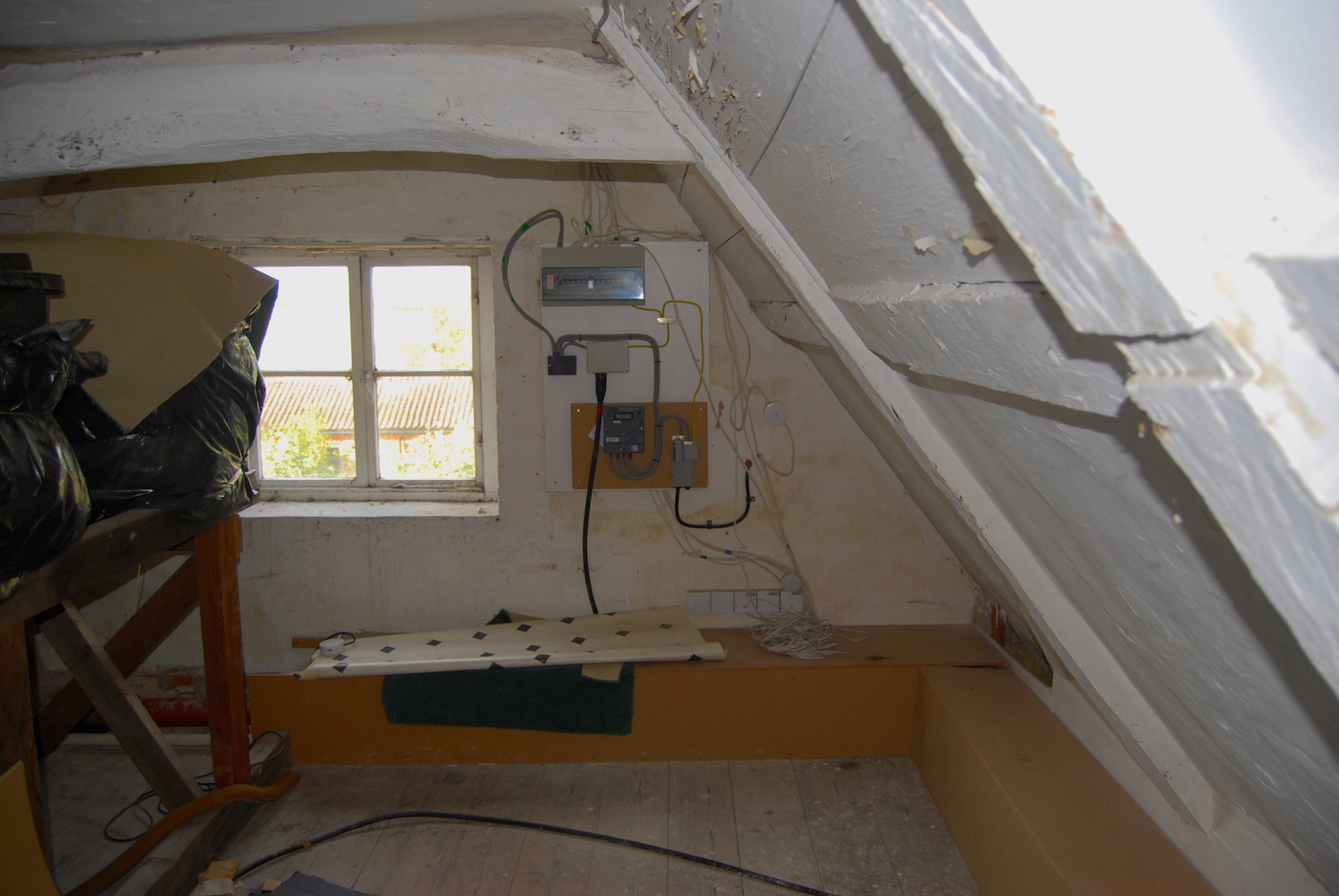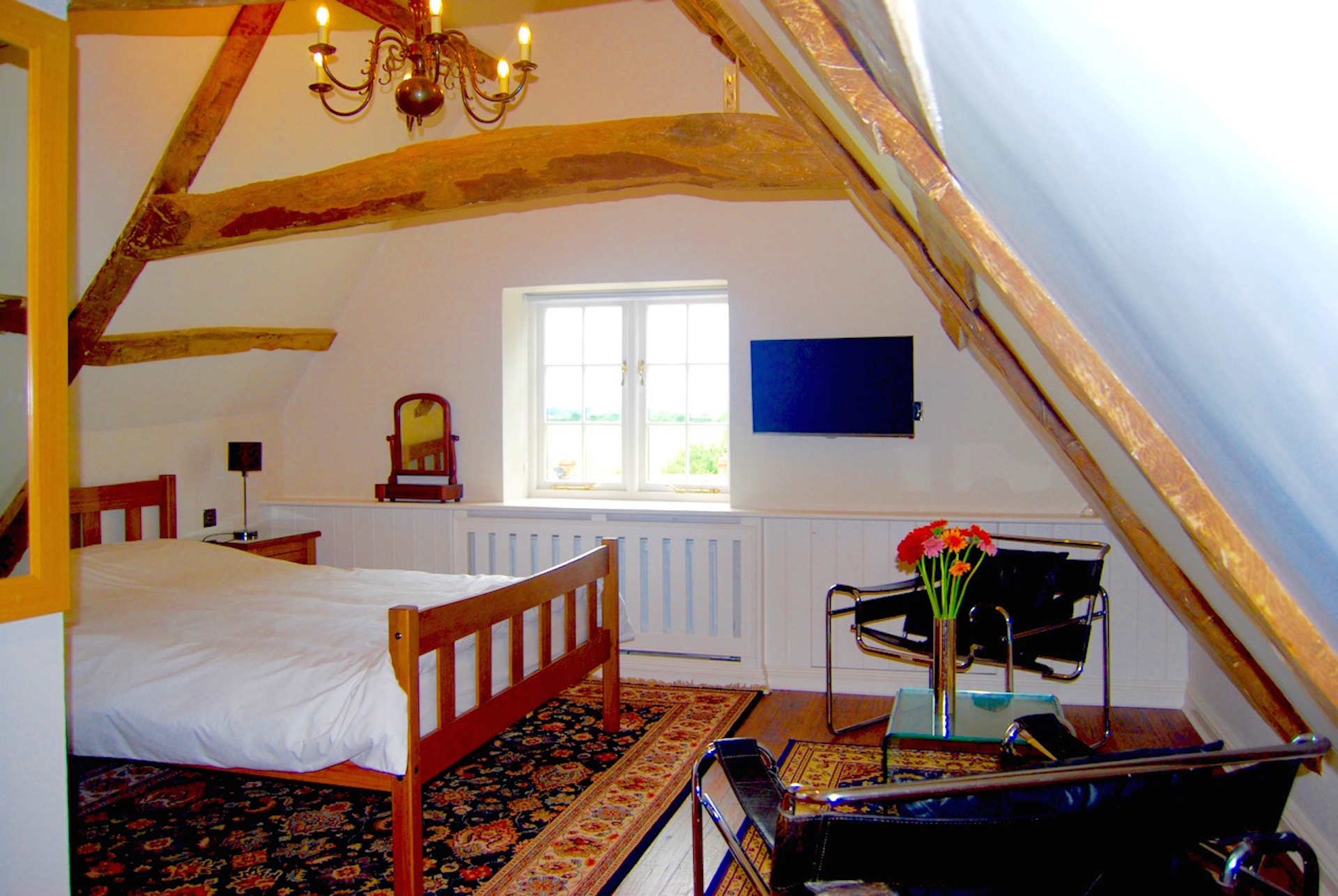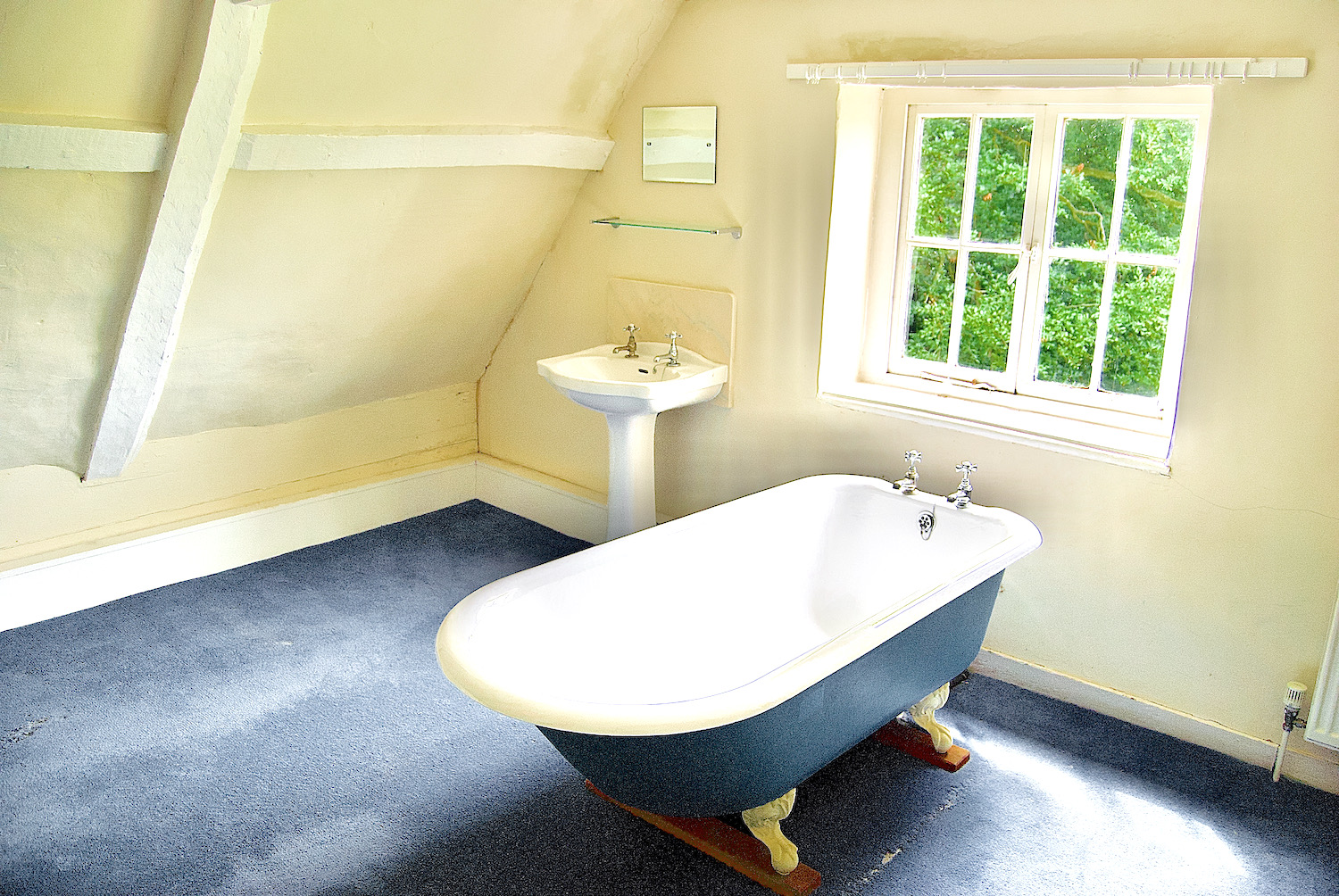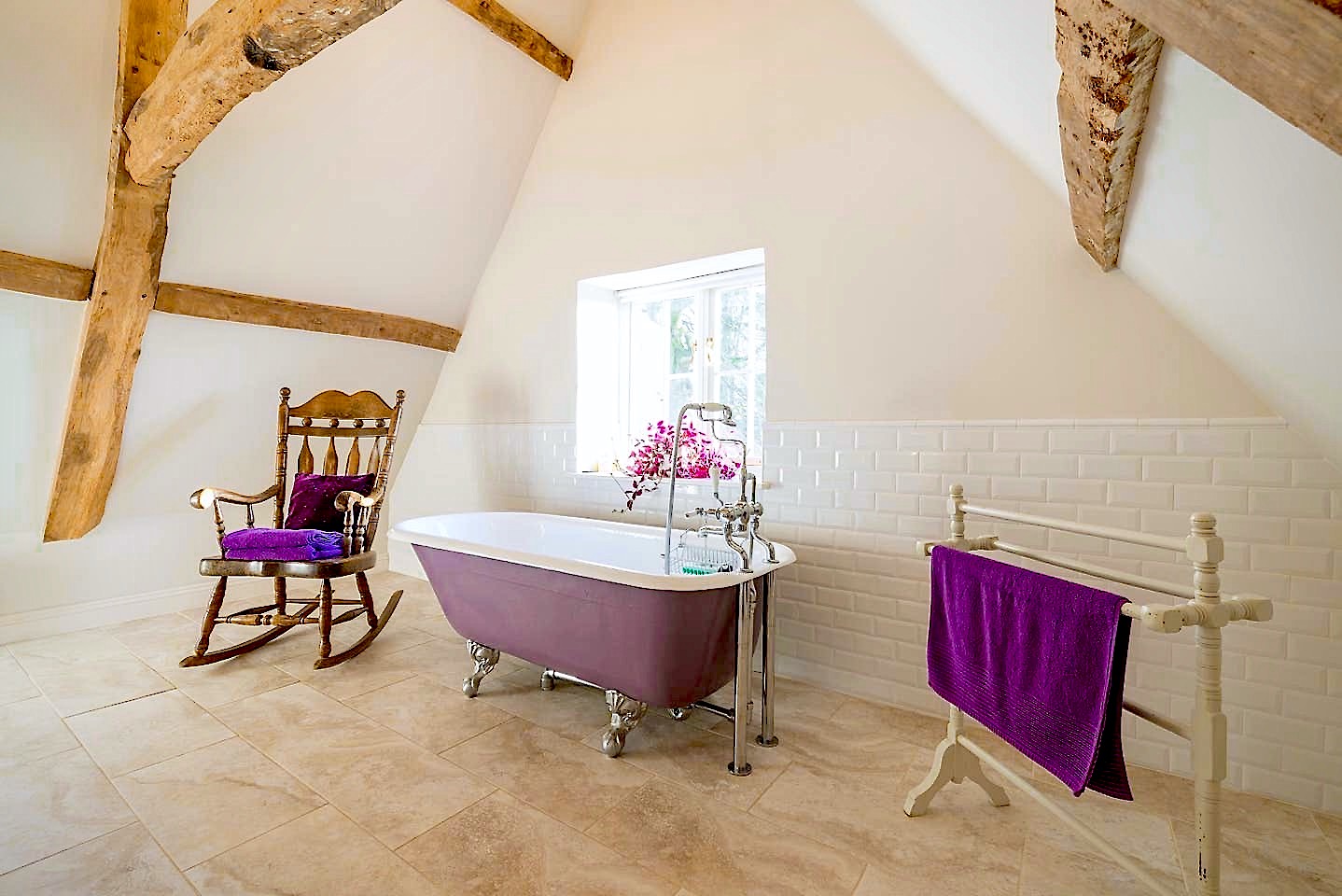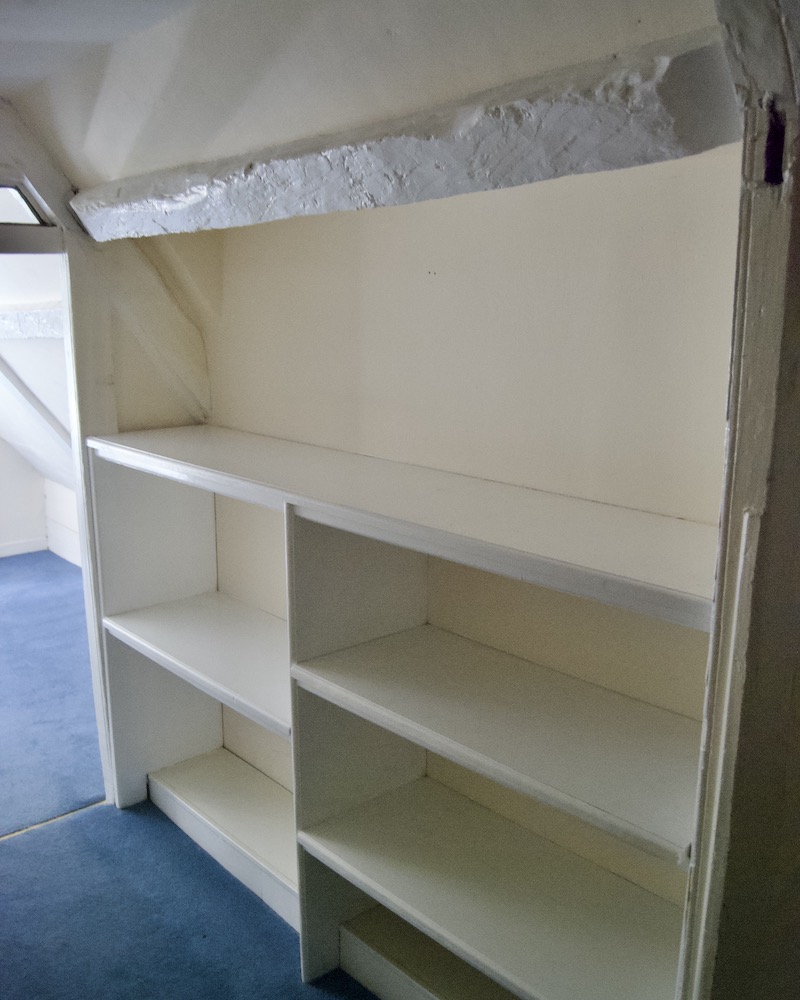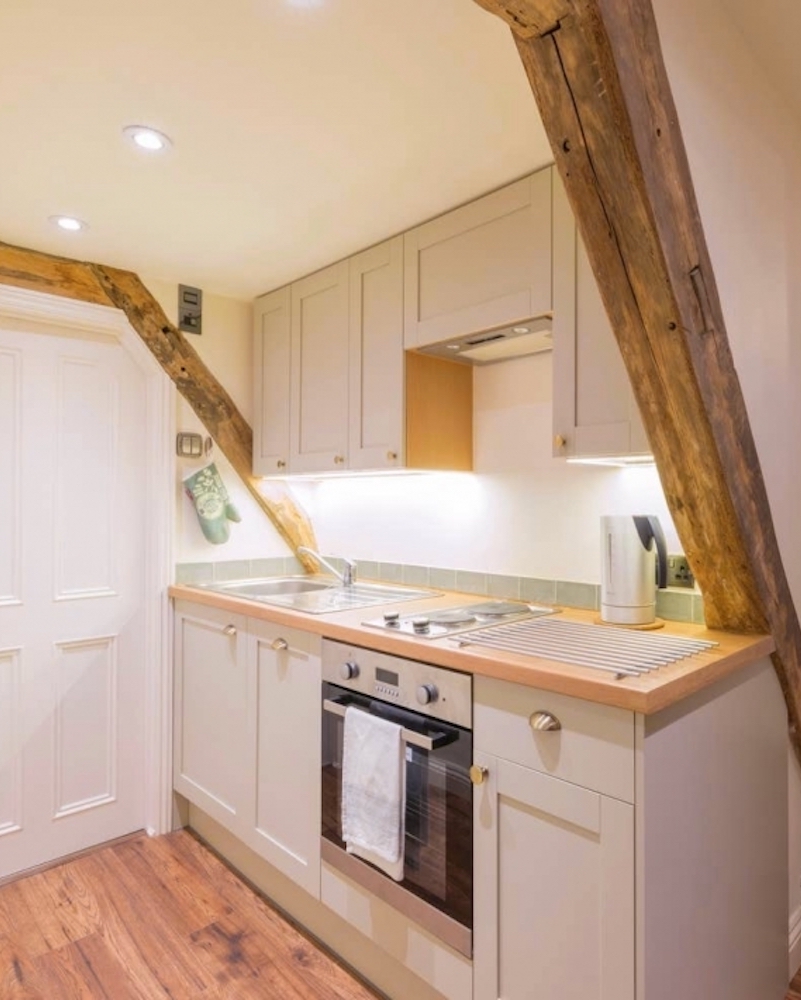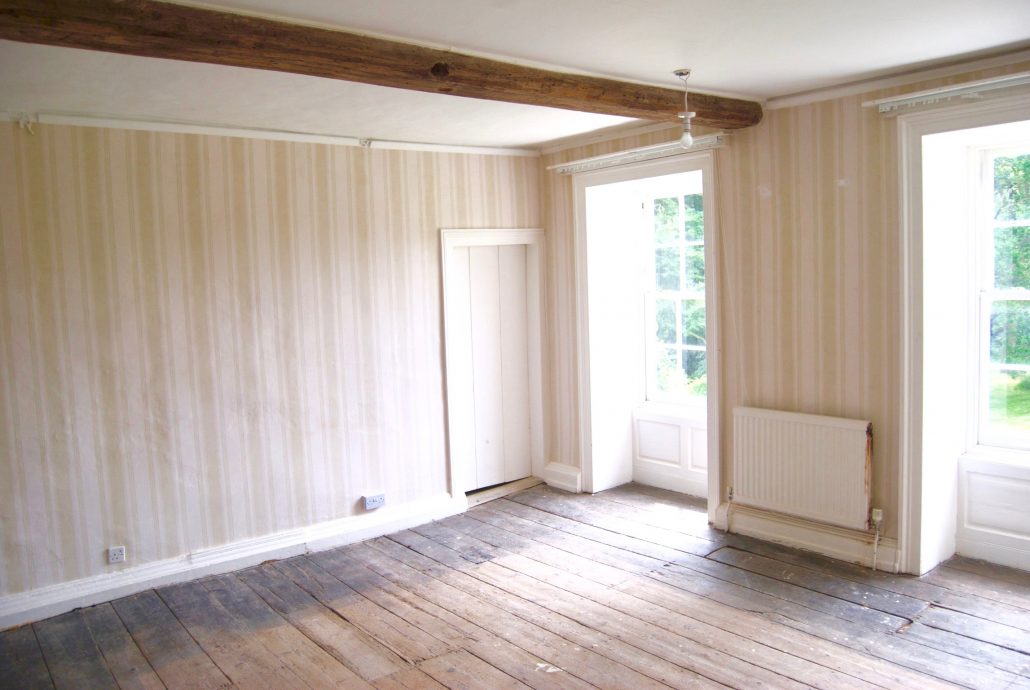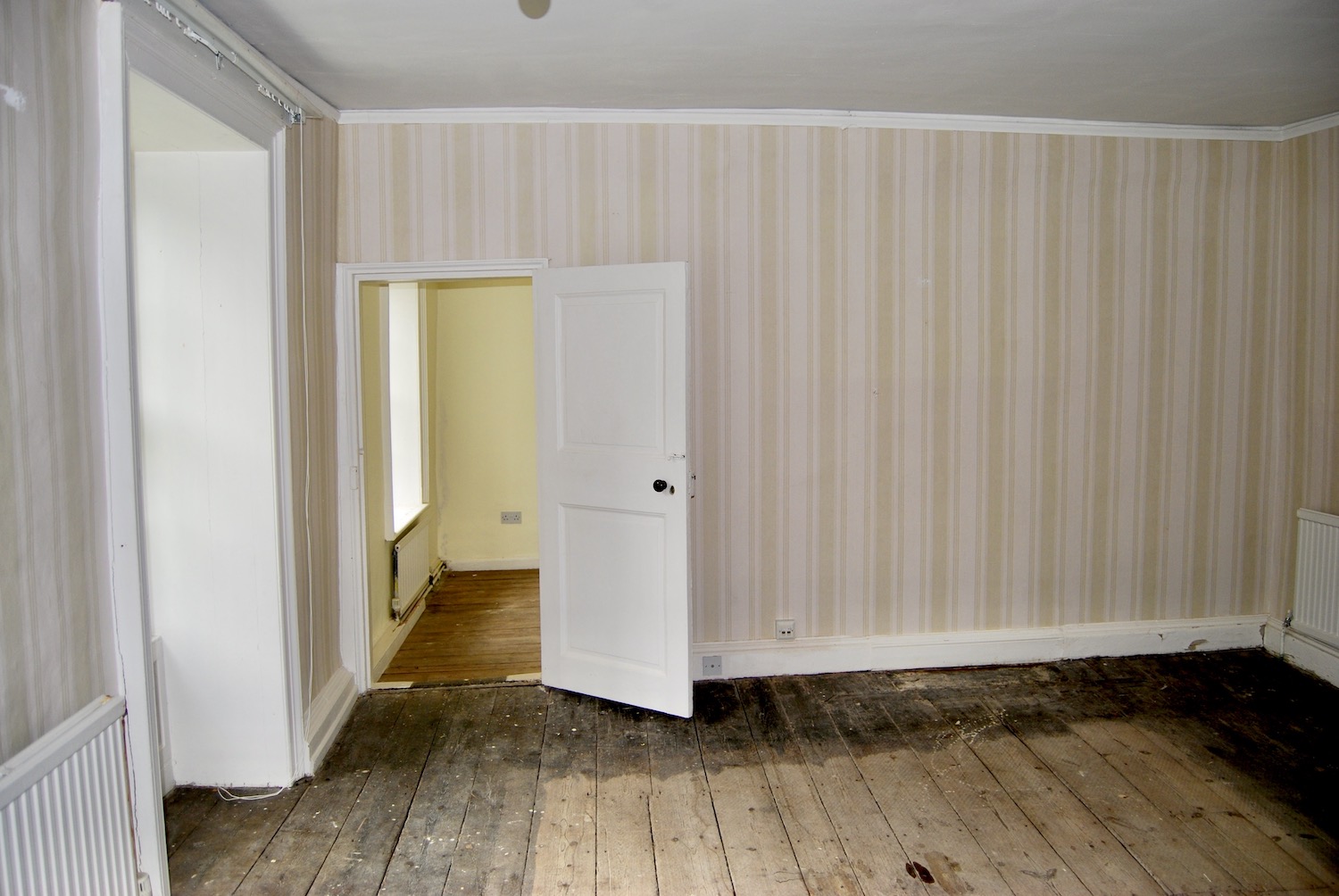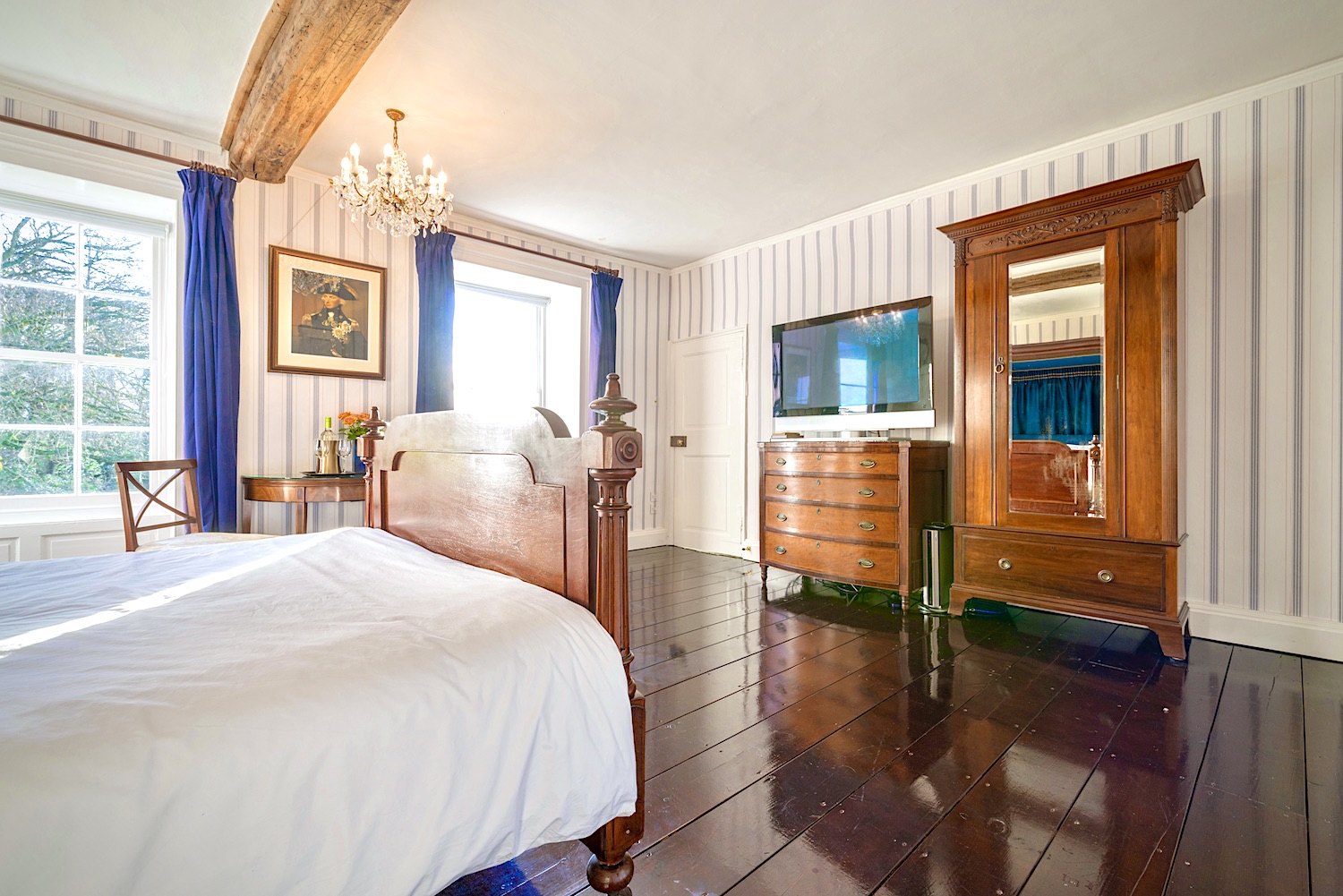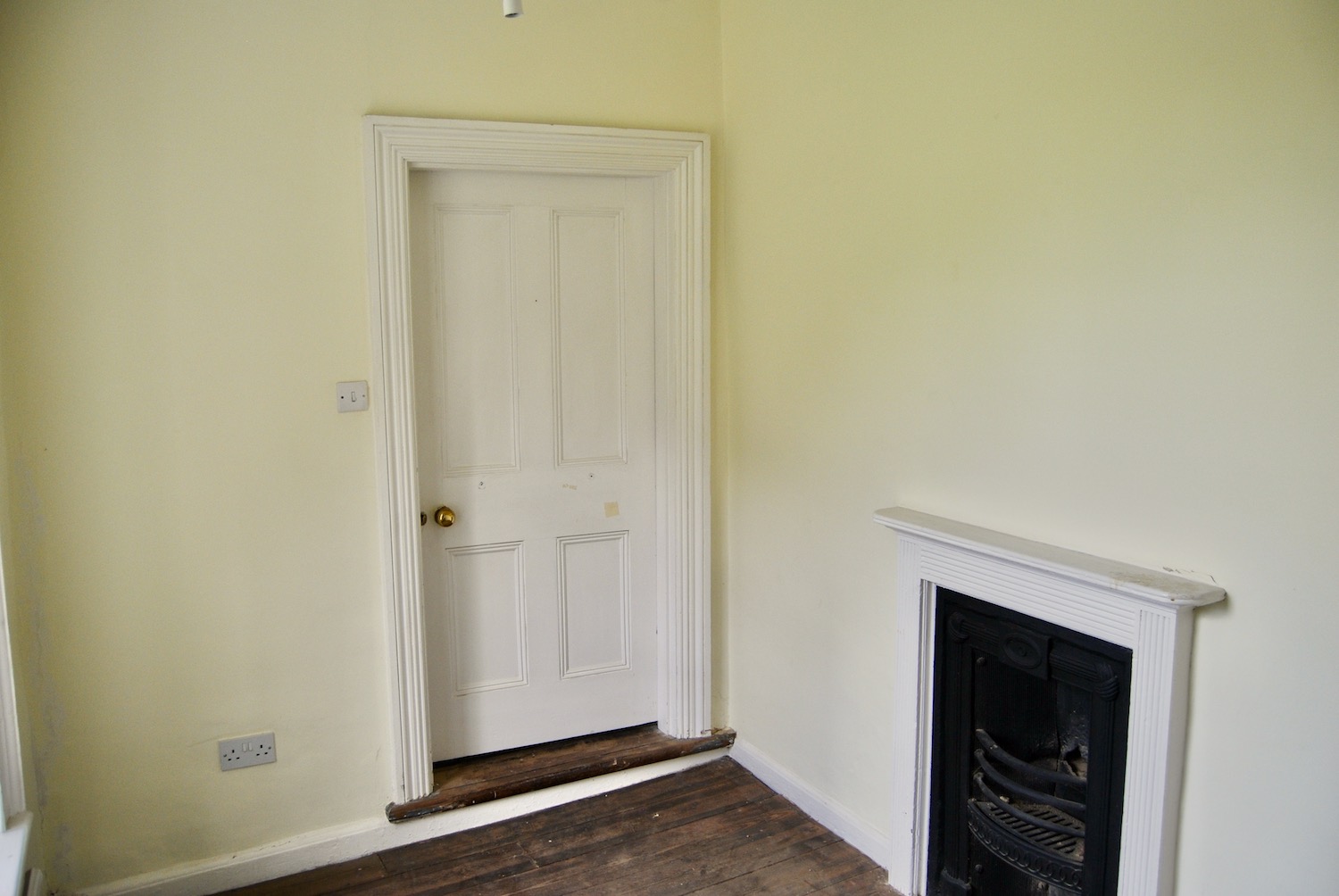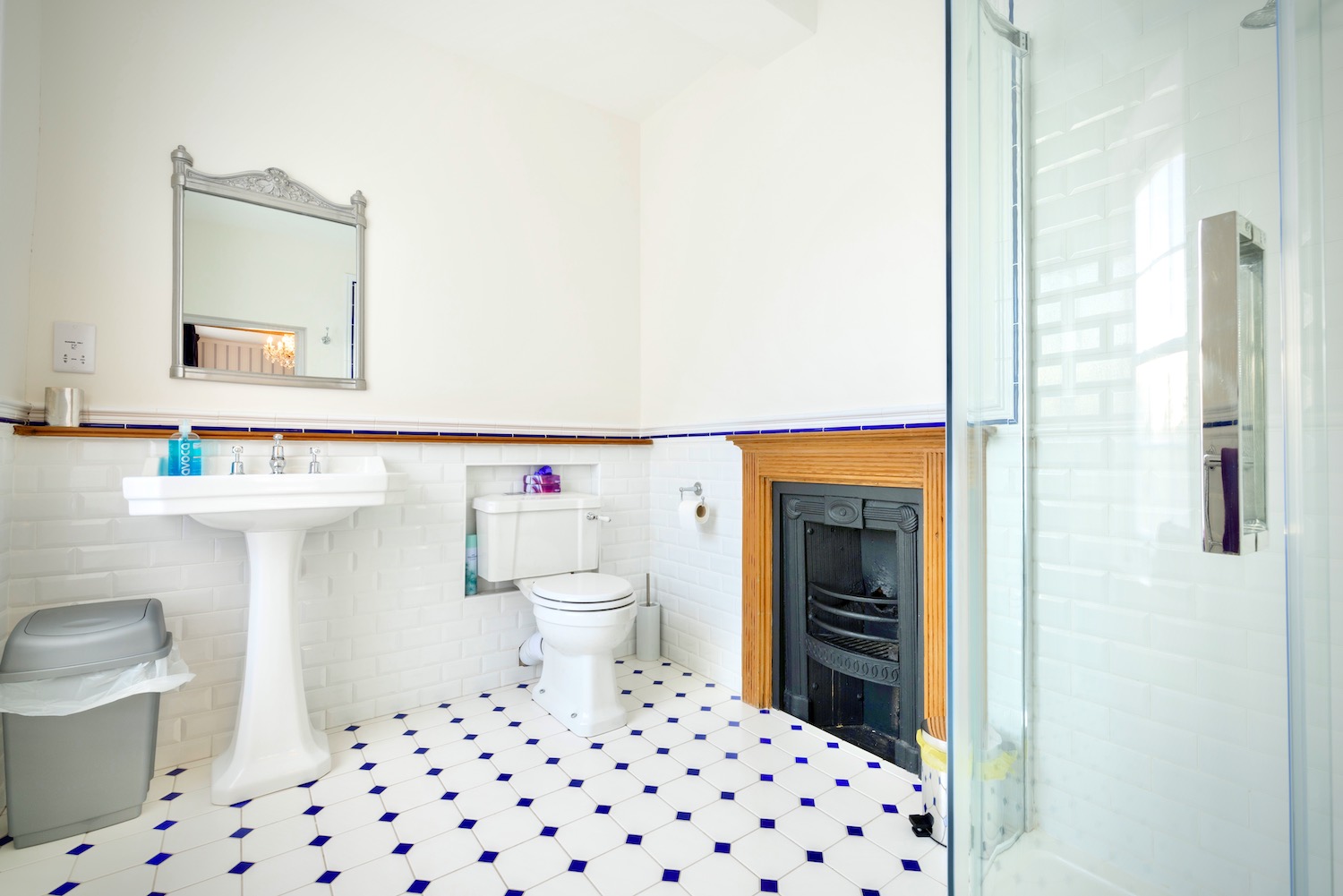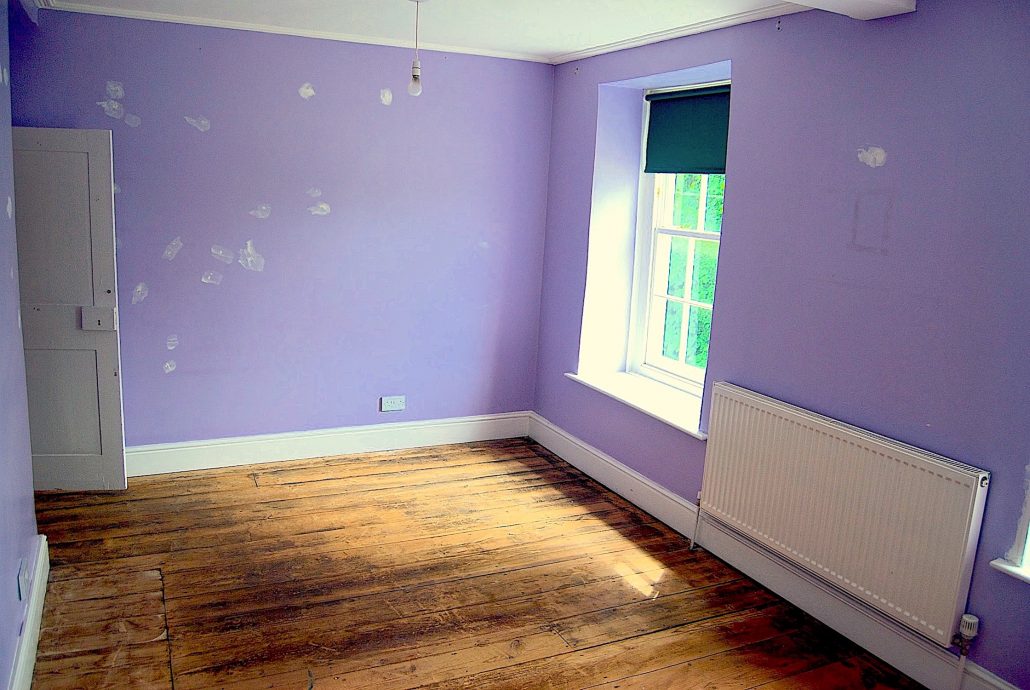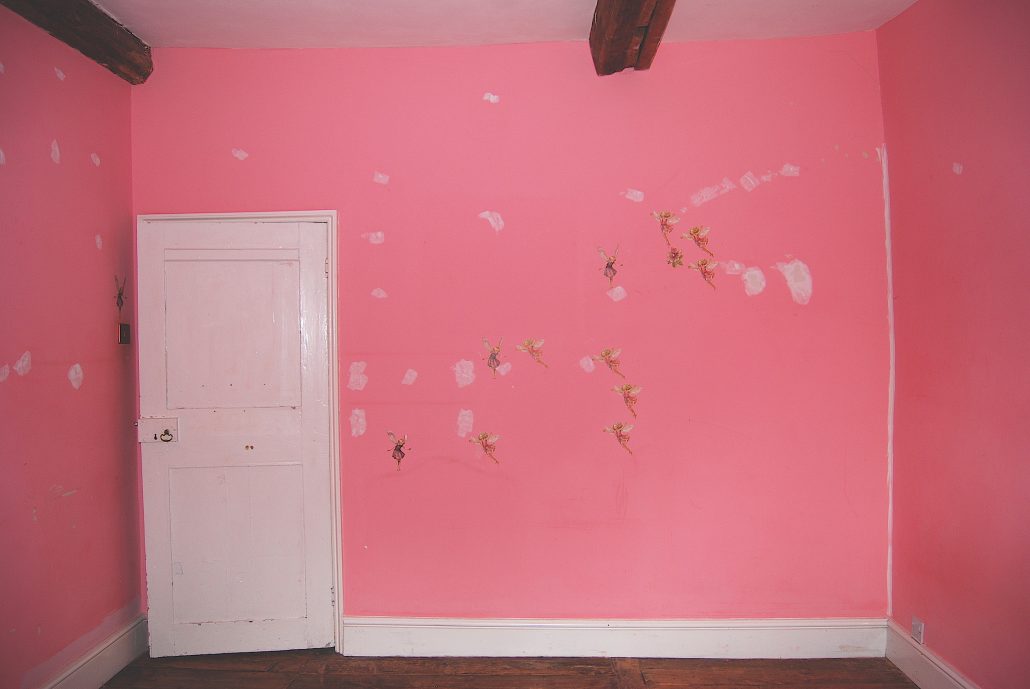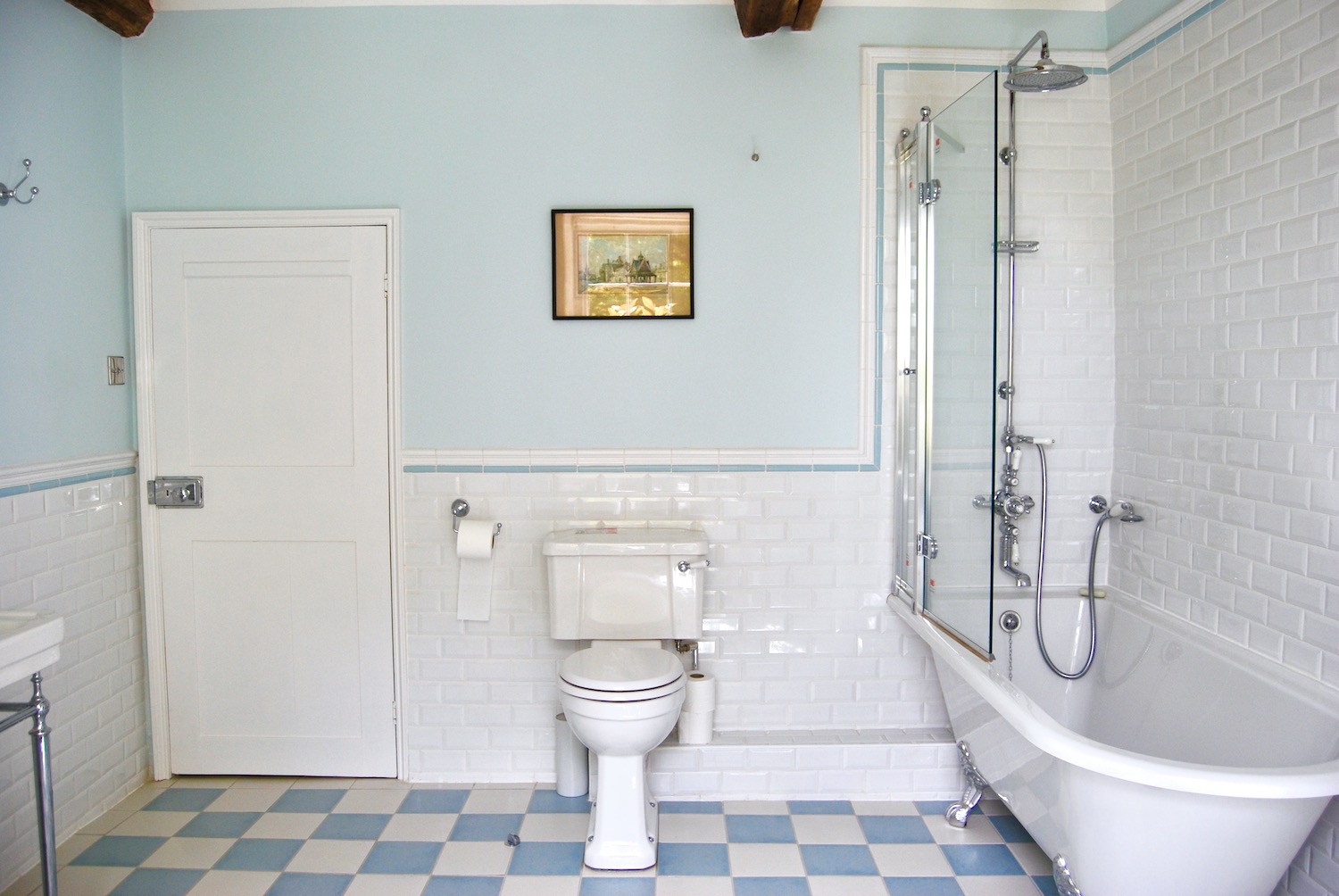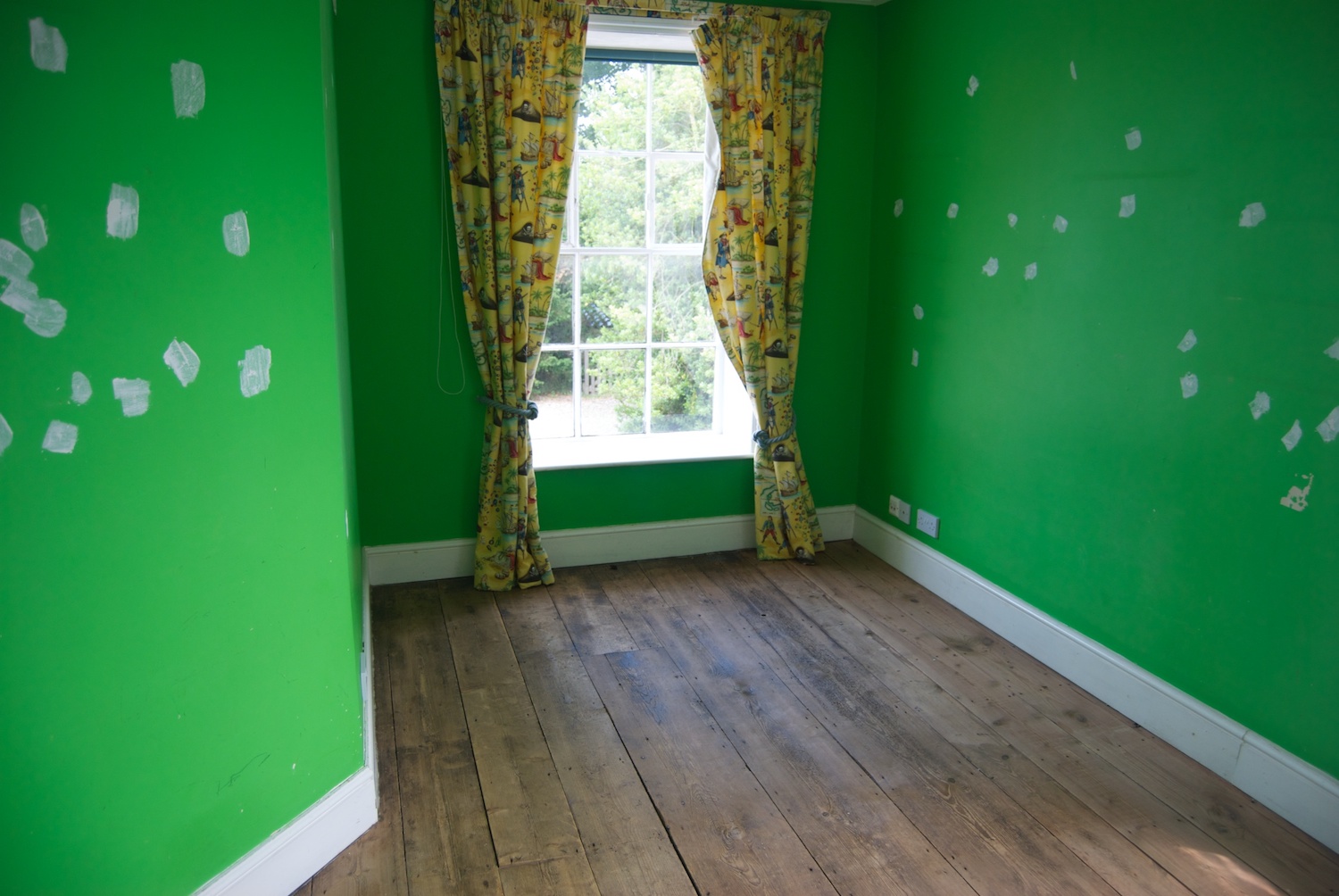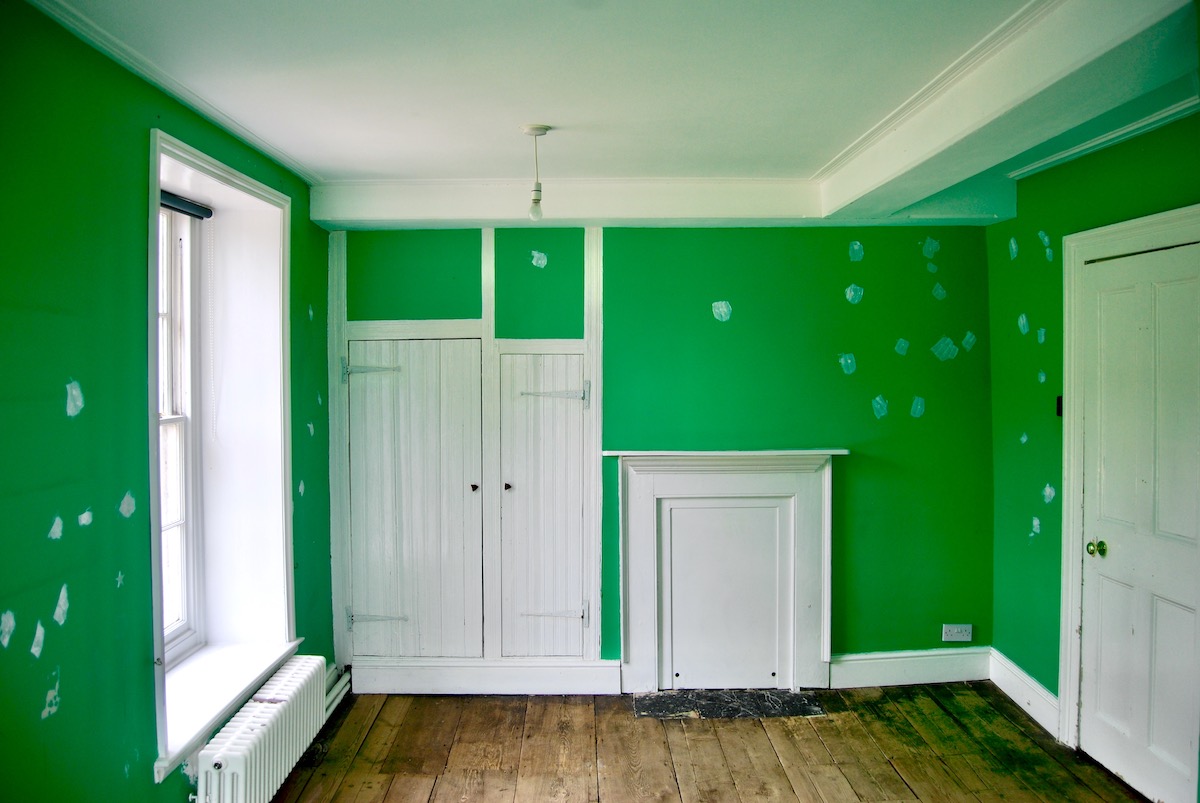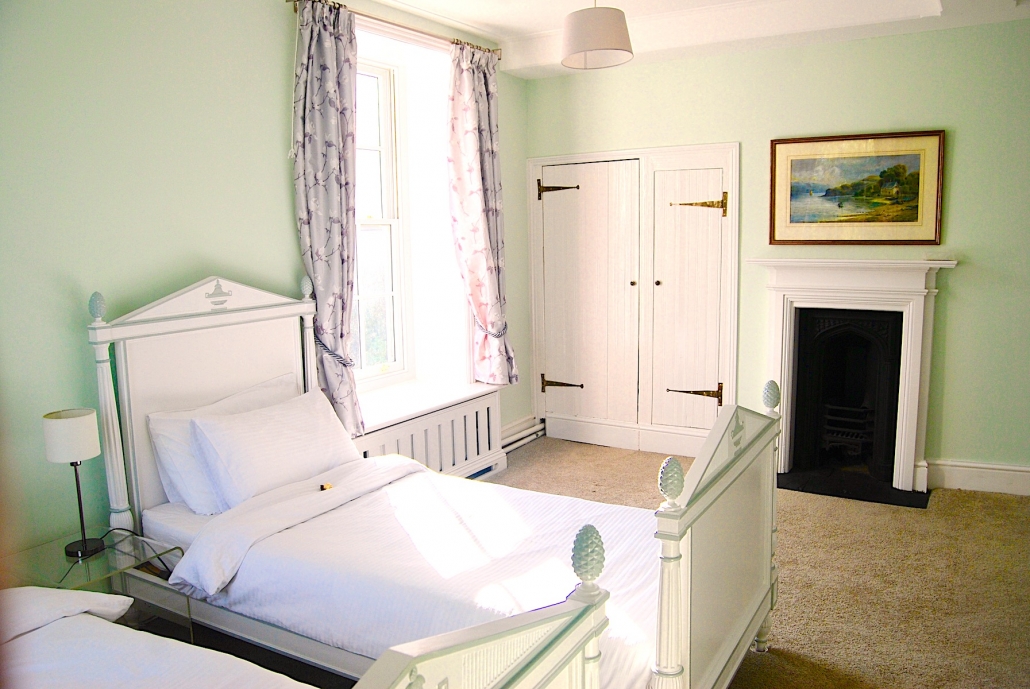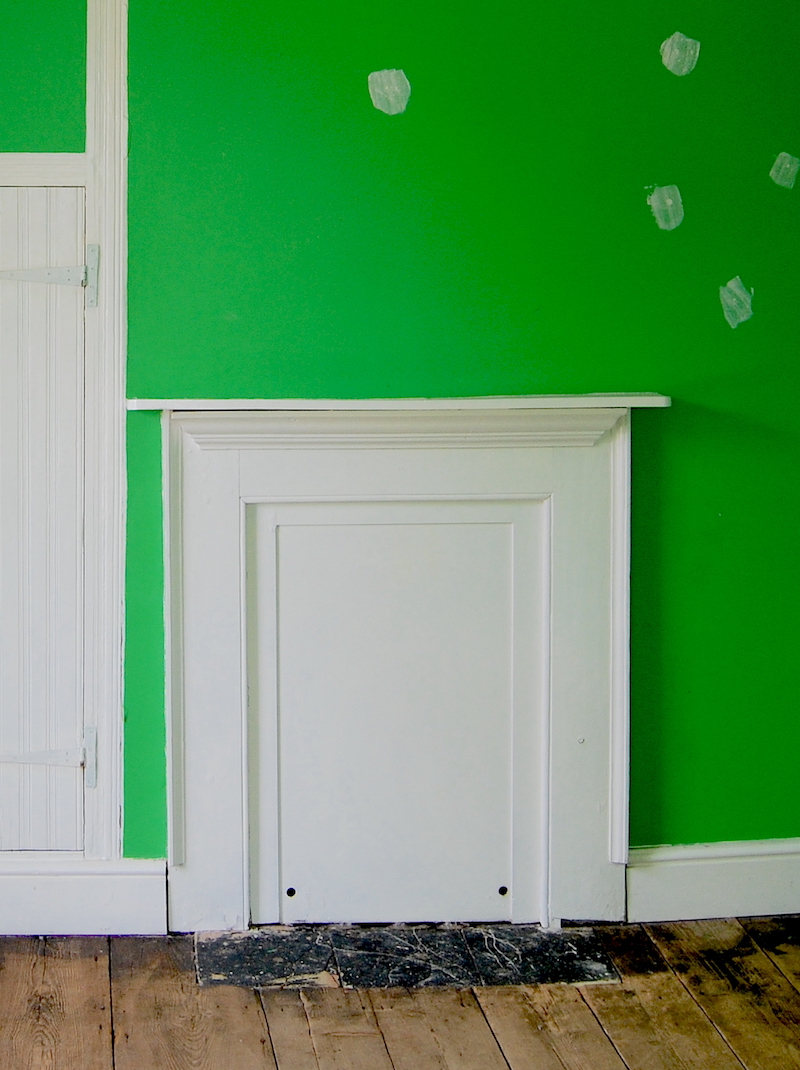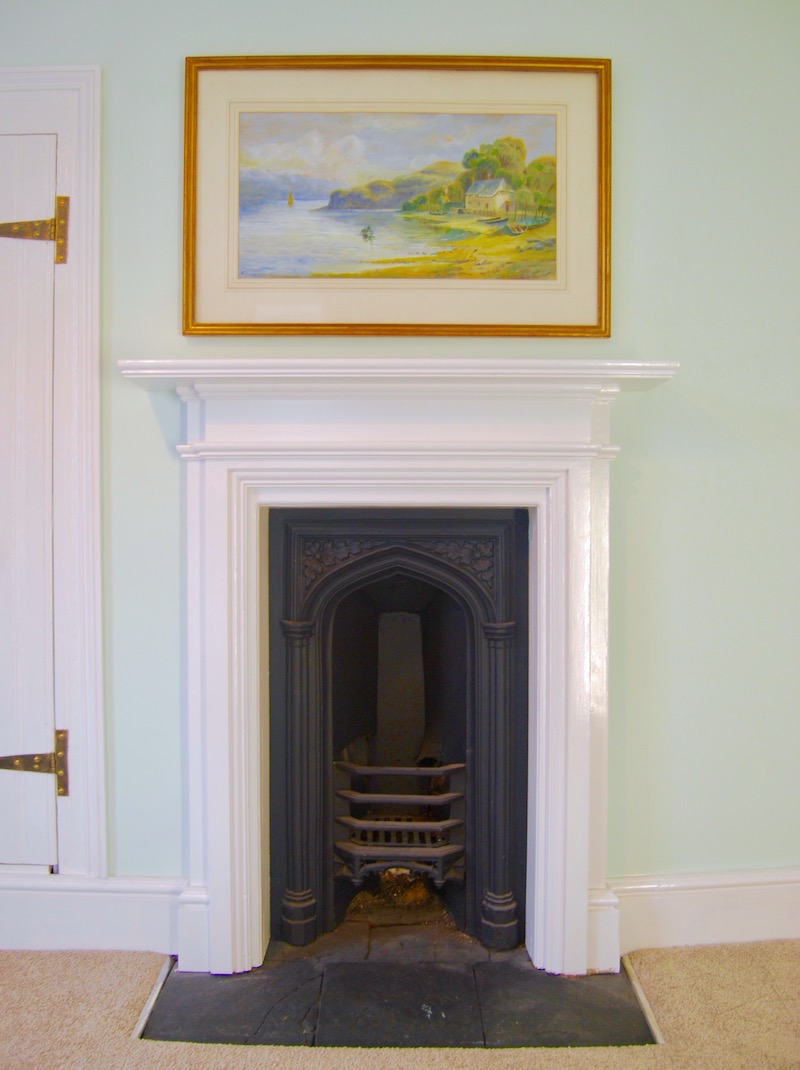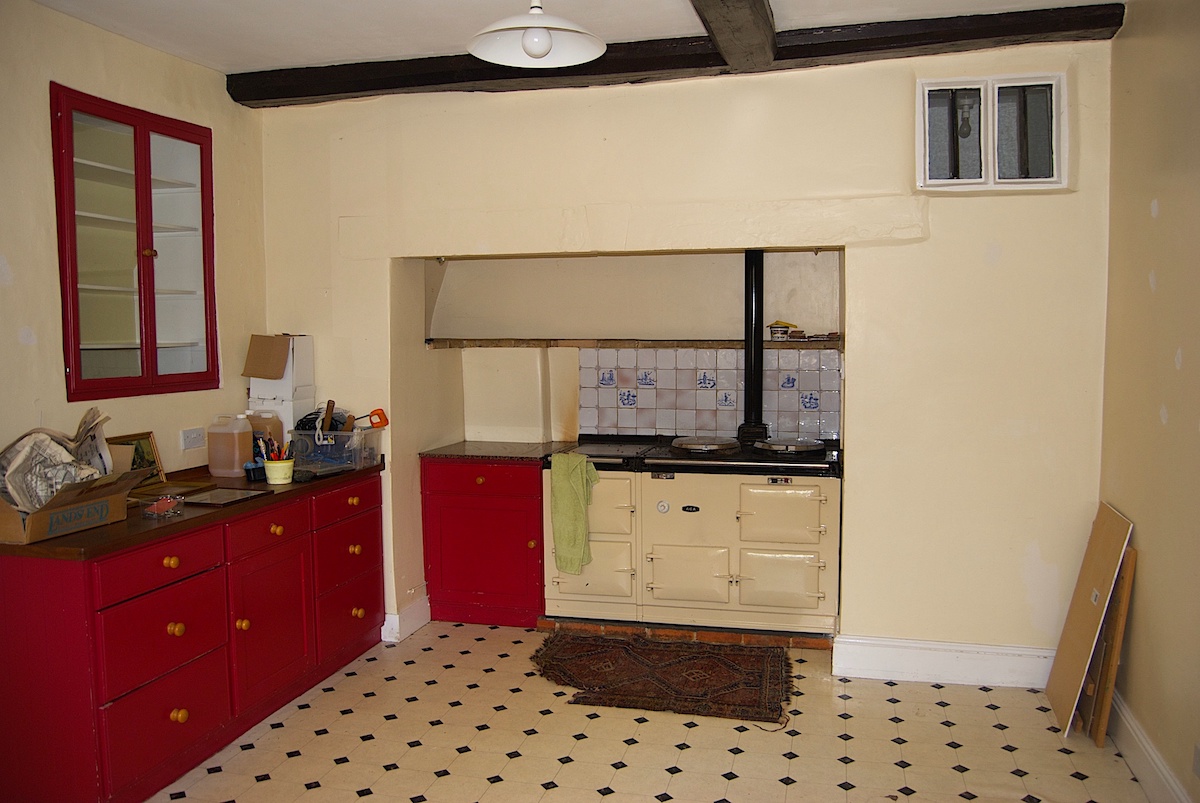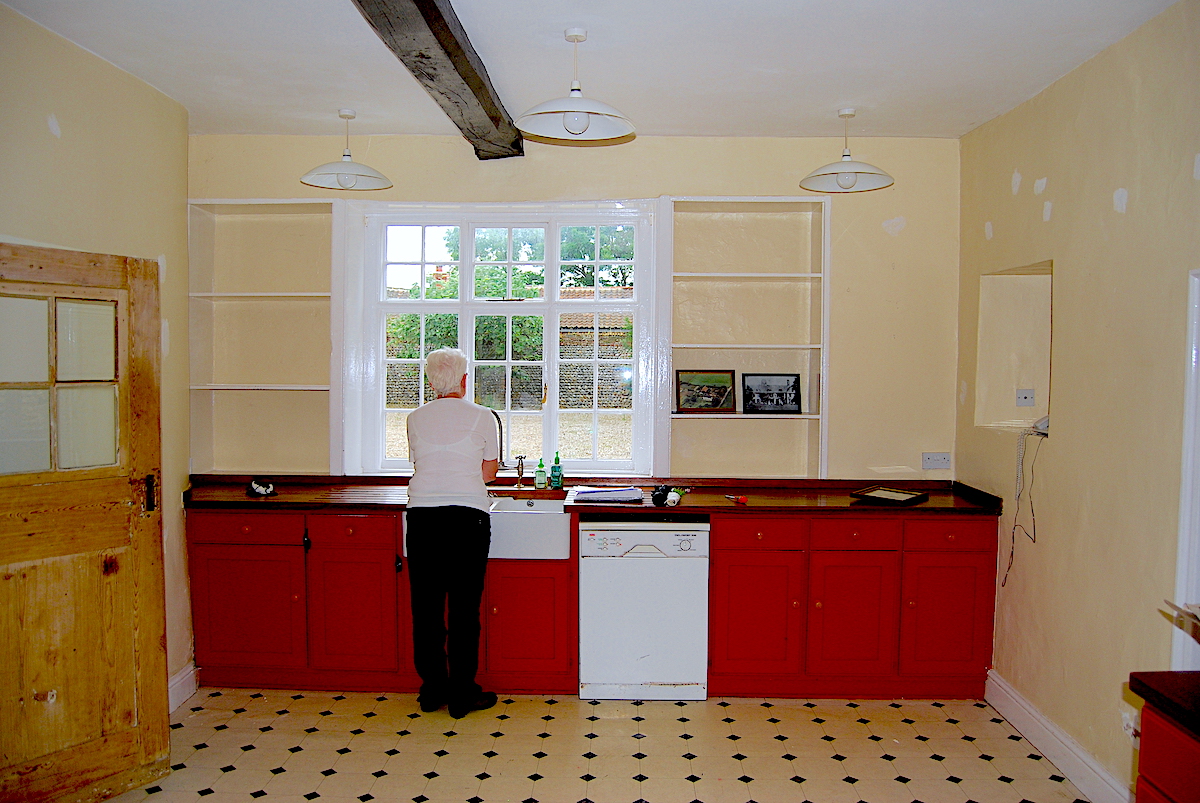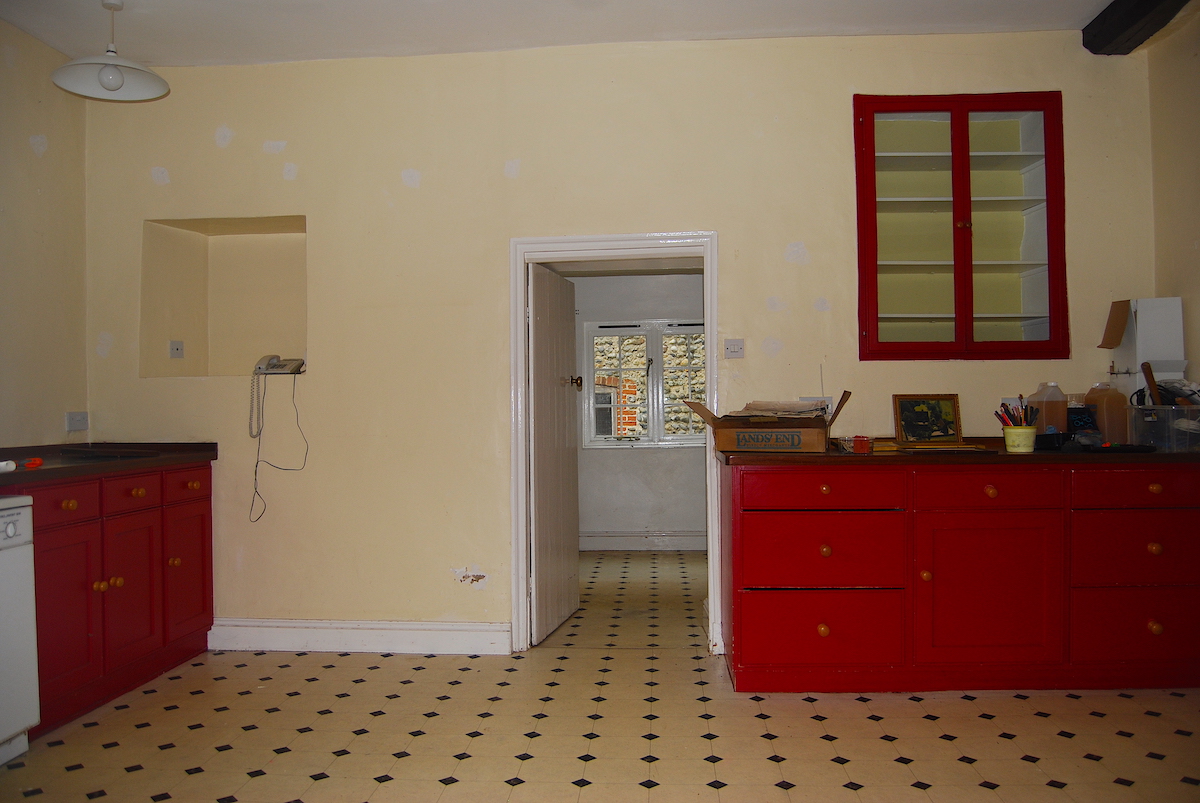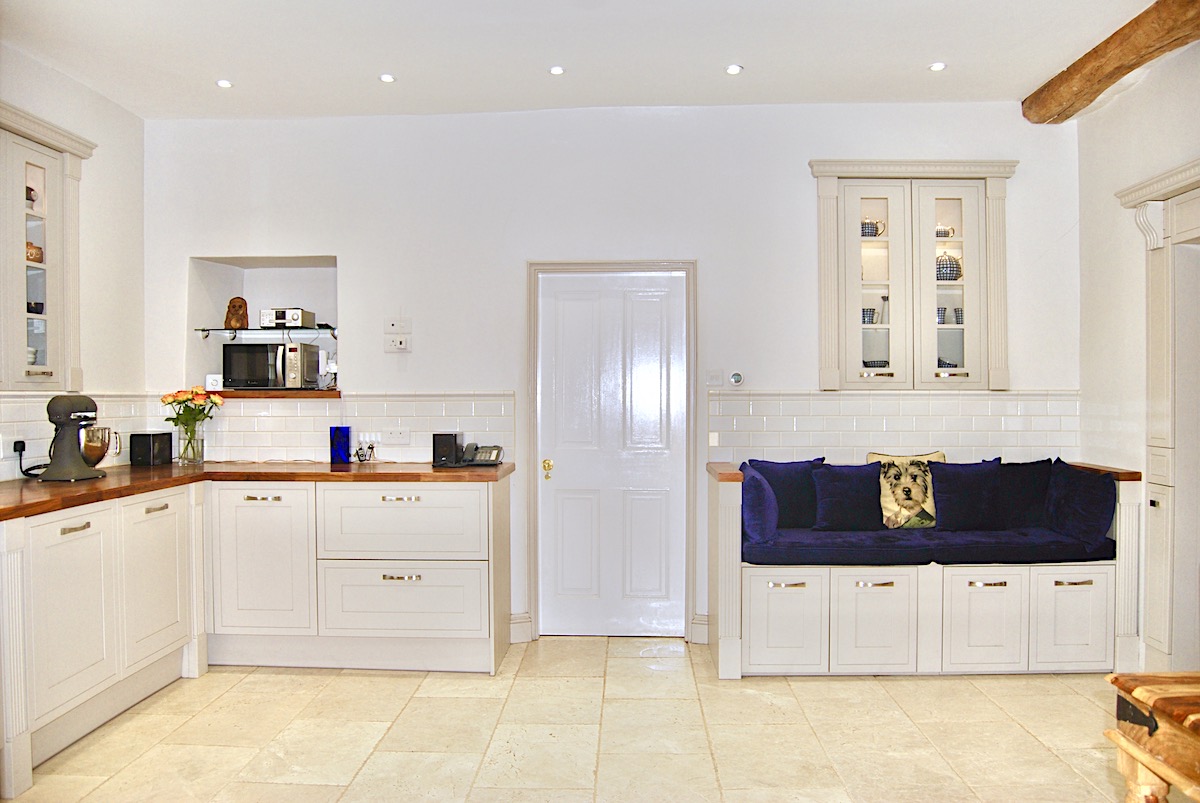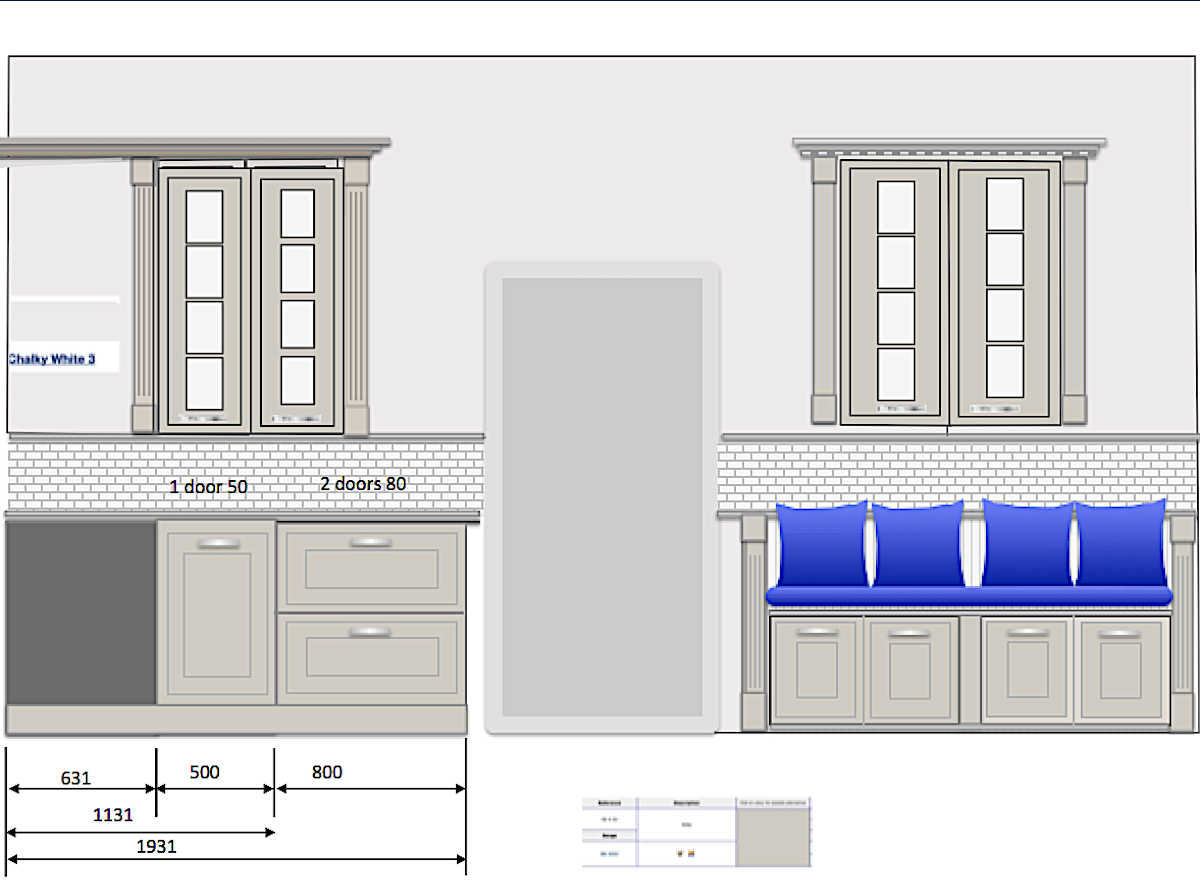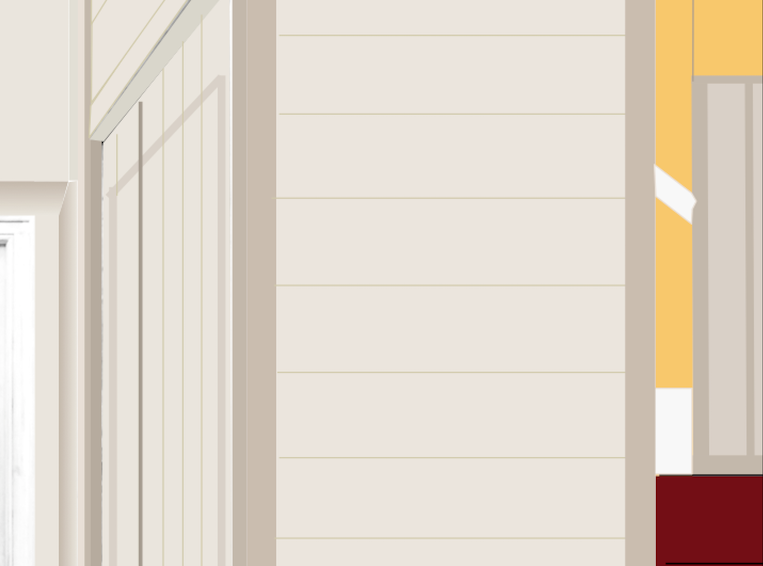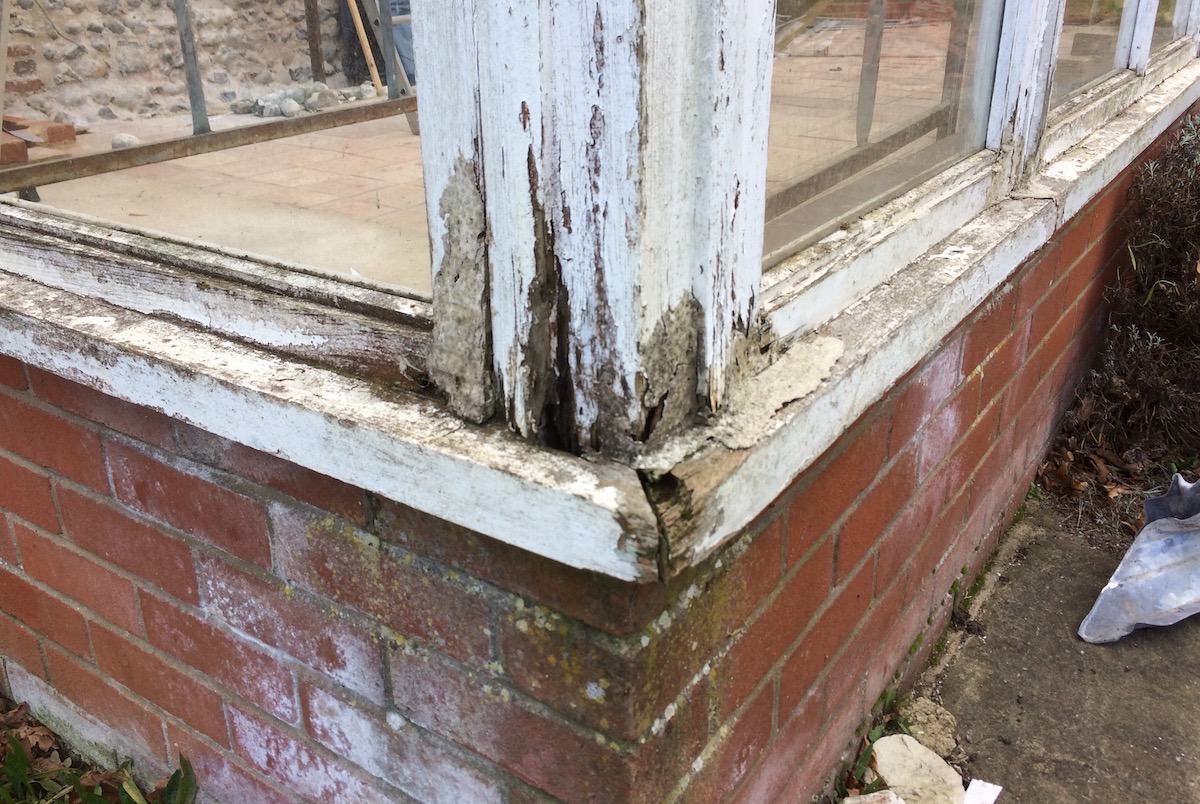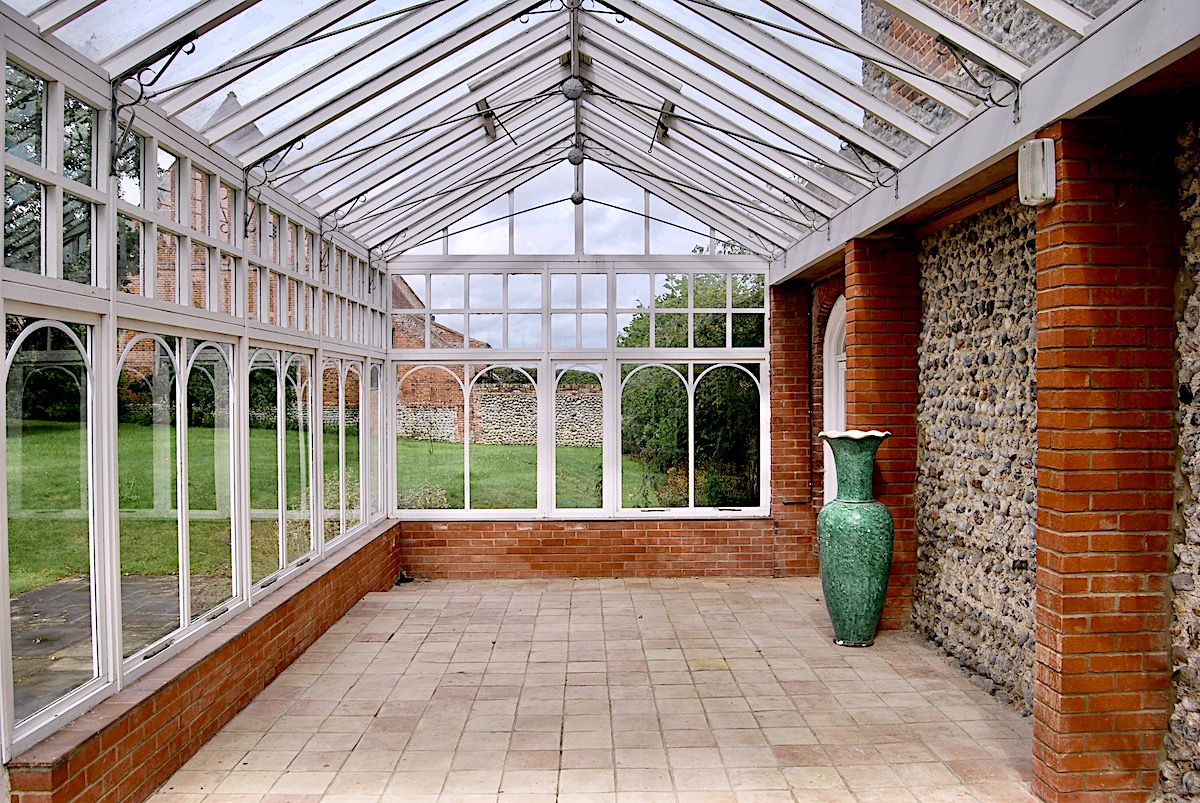Renovation Works 2015 – 2019
Swafield Hall before renovation, June 23, 2014.
Swafield Hall (North facade) in spring 2016 after the renovation.
In January 2014 Tim and Boris returned to London from Moscow were they’d been working for 5 years. Timothy worked in the IT business as EMEA Marketing VP and Boris was the managing director and editor in chief of Metro Moscow, at the time the largest daily newspaper in Russia. In 2014 Boris quit his job in the media business in Russia, which was becoming more and more controlled by the government. In the UK the couple started looking for a country house. When on May 31 they saw Swafield Hall for the first time, both said «definitely NO» to the property. But both actually were impressed by the beautiful South elevation and saw a lot of potential.
Photo of the North side of Swafield Hal roof, May 31, 2014.
The Secret Arabian Garden, overgrown with weeds, May 31, 2014.
Swafield Hall wasn’t in its best condition at that time. It had been on the market for a long time and nobody had lived there for 3 years. The roof was leaking, the walls were cracked, the chimneys were dilapidated and many windows, doors and wooden constructions were rotten. The gardens were there, but sadly full of weeds. And yet, it was a great looking house with more than 4 centuries of history. Despite the first rather negative impression, Tim and Boris returned to Swafield Hall several times, and finally decided to buy the Hall, to renovate it and restore it to its previous glory.
In cold rainy November 2014, the happy new owners finally moved into Swafield Hall, where they discovered that the boiler was broken, the roof was leaking much more than expected, and the main water supply was cut off. It was a “what have we done…” moment.
Checking the condition of the chimneys and leaking roof, December 2014
The first change at Swafield Hall estate was a marble replica of the Apollo Belvedere statue, by the hornbeam circus at the end of serpentine hedges (Apollo Promenade now). The Apollo Belvedere is a celebrated marbles sculpture from Classical Antiquity. It was rediscovered in central Italy in the late 15th century during the Italian Renaissance and was placed in the Vatican Palace in 1511, where it remains. Nearly forgotten now, for four hundred years after it was rediscovered, the Apollo was the most admired piece of sculpture and epitomised the ideals of aesthetic perfection for Europeans and westernised parts of the world. It was Napoleon’s biggest boast to have looted it from the Vatican after his 1796 Italian Campaign. Since 1798 the Apollo was part of the Louvre collection, but after 1815 it was returned to the Vatican.
Marble or bronze copies of the Apollo Belvedere can be seen in many parks in the Tsars’ summer residences near Saint-Petersburg, where Boris was brought up. English landscape design had a big influence on Russian parks in the 18th and 19th centuries and the gardens at Swafield Hall remind Boris of his homeland. The hand carved statue of Apollo Belvedere was ordered for Swafield Hall’s garden in a marble factory and installed at the end of Apollo Promenade in March 2015.
At the same time the full lead crystal chandelier, ordered from Spain, was installed in the main stairway.
Renovation work at Swafield Hall began in May 2015 under the direction of Mark Middleton, a highly skilled and creative builder from Great Yarmouth who specialised in period properties. The owners lived in the Hall, moving from one bedroom to another – even when the roof was completely open, when the heating and plumbing system was turned off, a temporary gas boiler was installed in the courtyard, and hot water flowed from it to the Master bathroom through a garden hose coming through the window.
Mark Middleton (at the top of the ladder) repairs the porch.
One of the temporary sleeping places for the owners of Swafield Hall during the renovation.
Two self-catering apartments on the top floor were opened for the first guests in the spring of 2016.
Swafield Hall exterior
In summer 2015, the fist task was to repair the dilapidated chimneys and the leaky roof of the house.
The brick and flint walls on the North facade and West gable had to be cleaned and repointed. Lost pieces of bricks from C17 pilasters, terminated at plain tiled drip course, were carefully restored using the reclaimed bricks from the same period and with the same colour.
Pointing, made in C20 with dark gray cement, was replaced by lime.
Ugly looking C20 drainpipes were removed from the North facade.
Most of the windows in the house were in poor condition, some of the large windows, like the window under segmental head in the large central early C19 Main staircase block, were simply unsafe. The old rotten windows had to be replaced with new ones manufactured to match those in old historical photos of Swafield Hall.
South facade in scaffolding, June 2015
West gable in scaffolding, June 2015
The unsympathetic looking dormers (South facade) were replaced with the design seen in photos taken from the 1880s.
The new window in the West flint gable (South wing lounge/bedroom) was made to match a 1950s picture and we replaced the rotten 1970s style window.
Two small inappropriate 1970s windows in the ground floor (North facade) have been replaced by a large sash window similar to the adjacent old window.
Hallway and the Main staircase
Georgian Interiors are well known for their elegant proportions alongside carefully balanced colours. Introduced in the late 18th century this strong yellow colour (like India Yellow by Farrow and Ball) was originally used in some of the most impressive interiors of Swafield Hall, particularly in the 17 metre long vaulted Ground Floor Hallway and the Enrance Hall with the open oak staircase.
Before the renovation: The Hall with brown Indian stone on the floor, affected by damp, and the Main Staircase (2014)
The Hall and the Main Staircase after the renovation (2017), with marble flooring.
In Victorian times the colour scheme darkened, woodwork become brown, the floor was decorated with octagonal tiles, which were worn out and covered by linoleum in 1980’s. None of the Victirian tiles survived, because around 2003 brown Indian stone, usually used for patios and pavements, was laid in the Hallway. Waterproofing wasn’t done properly, and the Hallway floor and walls were affected by damp. In addition to this, the roof leaks damaged the vaulted ceiling.
The Hall and the Main Staircase with modern Indian stone flooring, before the renovation
The Hall and the Main Staircase in the 1950’s
The Hall and the Main Staircase during the renovation
The full lead crystal chandelier, ordered from Spain, was installed above the main stairway.
During the renovation we have retained the traditional Georgian yellow/white colour scheme, but replaced the dark stone tiles with silvery coloured Argento marble. We carried out the necessary damp-proof work and repaired the vaulted ceiling that had been damaged by leaks. The modern aluminium radiators in the hallway have been replaced by traditional looking ornate cast iron ones.
Damp on the wall and on the floor in the Hallway, before the renovation,
The Hallway after the renovation (2017), with new marble flooring.
South Wing on the top floor
The renovation of the 2nd floor with South Wing apartment and East Wing Apartment was completed in May 2016.
Before it, the South Wing principal bedroom had a low ceiling. Most of the beams were hidden under the plasterwork, the visible ones were covered with white paint. During the renovation the old beautiful oak beams were opened up; white paint from the beams was removed. Build-in C20 painted shelves were also removed from the South Wing principal bedroom.
South Wing: principal bedroom with low ceiling and painted beams, before the renovation (2014).
South Wing: principal bedroom / lounge after the renovation.
In the apartments upstairs you can now see the original roof beams that were previously hidden. The house actually has two roof structures, one inside the other. The beams that are now visible are from the original thatched roof and an additional structure was built at a later date to support the current tiled roof. It’s possible to see the numbers on each beam, which were carved in the 18th century by carpenters before the roof was assembled.
South Wing: principal bedroom with low ceiling and painted beams, before the renovation (2014).
South Wing: principal bedroom / lounge after the renovation.
The unsympathetic looking late C20 dormers and windows were replaced with the design seen in photos taken from the 1880’s and 1950’s, but the original shutters were saved and restored.
.
East Wing on the top floor
Since at least the early 1950s, the North Bedroom of the East Wing had been converted into a water-tank room. Over the years, high humidity and woodworms had damaged the 16th century oak beams and the bedroom required careful renovation. In the same room there was an electrical panel with an electric meter, and there was no heating. Extensive work has been carried out, the water tanks were moved to the lower floor, the heating and water supply system was completely updated. The damaged beams have been treated, reinforced and look good now.
East Wing bedroom (former water tank room) before renovation. Water tanks are on the left, covered with black insulation.
East Wing bedroom after the renovation.
After the renovation the East Wing once again features a cozy double bedroom with an antique chandelier and a luxury bathroom with a free-standing bathtub (it was there before the renovation).
East wing bathroom before renovation, with moth-damaged carpet on the floor.
East Wing bathroom after the renovation.
East Wing kitchen before renovation.
East Wing kitchen after the renovation.
Nelson’s Suite on the first floor
The renovation of Nelson’s Suite was finished in February 2017. Nelson’s bedroom (South Principal bedroom in the old days) retains a lot of its original features. There is an antique half tester bed, suitable for a luxurious bedroom. Local legend is that Horatio Nelson stayed in the house, probably in the South Principal bedroom. He visited this area many times and attended Paston Grammar School, North Walsham, until he was 12 years old. North Walsham is 2 miles from Swafield.
Nelson’s Suite before the renovation, with quite damaged and slopey floor and Laura Ashley wallpaper.
Nelson’s Suite after the renovation.
Before the renovation the room had a very slopey and unsafe looking floor, unsympathetic wallpaper. The original low servants’ door was nailed shut and probably hadn’t been opened for a couple of hundred years. The rotten and damaged by woodworms floorboards in Nelson’s suite were unsafe and had to be replaced
Nelson’s Bedroom before the renovation, with the door to the boudoir. The floor was quite damaged.
During the renovation the old Boudoir/Dressing room with communicating doors was converted to Nelson’s en-suite with Victorian style shower and original fireplace. The door was relocated to the Blue Bathroom. The boudoir/dressing room connected to the suite was mostly empty and uninhabited during the last few decades. The fireplace in that room was last used in the early sixties and its chimney was plugged by a 1963 newspaper.
After the renovation Nelson’s Suite retains its original features like antique plaster, bay windows, servants bell mechanisms, and C18th enfilade doors. We kept and restored all the original door knobs and locks, wooden panels of the bay windows, low servants door and the fireplace in the old boudoir/dressing room.
Blue bedroom and bathroom on the first floor
This Blue bedroom was historically called the “East bedroom”. It had a fireplace and a communicating enfilade door to the Dressing room. Unfortunately, in the 1980’s the fireplace was boxed, the door passage to the Dressing room was blocked and covered, the Blue bedroom was pained in a bold lilac colour. After 2002 the Dressing room was used as girl’s bedroom and painted in “Barbie pink”. The floor boards were worn and weren’t very safe.
Blue (lilac) bedroom before renovation, June 2014.
Blue suite (previously East or Lilac bedroom) after the renovation.
Pink bedroom (previously Dressing room/Boudoir) before renovation.
Blue bathroom (previously pink bedroom) after the renovation.
During the renovation the old hidden enfilade passage between the Blue bedroom and Pink bedroom (Dressing room) was reopened, and two rooms formed the Blue suite. The original door was reinstated. Rooms were decorated in appropriate shades of blue. The Pink bedroom was converted to a large, luxury Blue bathroom with Victorian style bath & shower. The second enfilade door from the Blue bathroom to the Nelson’s suite is also there, but locked and hidden inside the white wardrobe.
We couldn’t open the old fireplace in the Blue bedroom, but under the floor boards on the left hand side of the fireplace we discovered a huge empty space (above the kitchen chimney), big enough to hide a priest in olden times.
Green bedroom and bathroom on the first floor
During the renovation one of the C20 walls between the green bedroom and former family bathroom was moved, the bedroom become more spacious and received an entrance door to its own ensuite bathroom with Victorian style shower. The green colour scheme become calmer. You can see on the photo below two French antique single beds, which were purchased for the Green suite in an antique auction.
Green bedroom before renovation: no entrance to the bathroom, very narrow space between two walls, suitable just for one single bed and eye searing emerald green walls.
Green bedroom after the renovation, with two French antique single beds. The wall between the bedroom and former family bathroom was moved.
You can see on the photos two French antique single beds, which were purchased for the Green suite in an antique auction.
The original Gothic revival Victorian fireplace was discovered behind the C20 screen. It was opened and received the new sympathetic looking wooden surrounding. The rotten sash windows were replaced, and the radiator was put into a paneled radiator box.
Master Kitchen on the ground floor
Master Kitchen was the first room to be renovated at Swafield Hall. The wall that separated the room from the narrow corridor to the library (morning room) was demolished, the kitchen became more open and spacious, the original 16th century symmetrical proportions of the room were restored. On the floor the old worn out linoleum was replaced with marble tiles and an underfloor heating system was installed. Boris designed the new kitchen cabinets that replaced old ones from the 1980s.
Master kitchen before the renovation.
Master kitchen after the renovation.
Master kitchen before the renovation.
Master kitchen after the renovation.
Master kitchen before the renovation.
Master kitchen after the renovation.
Master kitchen, design project.
Master kitchen, design project.
Servants staircase and the guest cloakroom on the ground floor
In May 2017 we completed the renovation of the Servants staircase and the guest cloakroom. They are situated on the ground floor in 16th century part of Swafield Hall and connected to the Main Hallway. For servants staircase and guest cloakroom we’ve chosen a traditional colour scheme, coordinated with the Main Hallway, and the same Argento marble flooring.
Colour scheme computer project for the Servants staircase and the Main Hallway.
Photo of the Servants staircase after redecoration.
Paintwork on the Secondary Servants staircase and wine cellar door has not been painted properly for decades. All the old scratches, сracks and dents on the woodwork were painted over and over and as the result the staircase looked unloved and very worn out.
The guest cloakroom is situated opposite the Servants staircase. This room was created in the 1980’s in the former Butlers’s Pantry. At that time the guest cloakroom received a rather ugly looking small window to the court yard. The walls were painted in an eye searing orange.
The roof above the guest cloakroom was leaking for a long time and as the result the ceiling and archway were greatly weakened.
During the renovation the guest cloakroom was completely updated. It received the same marble floor as the hallway and kitchen. The roof was repaired, the archway was reinforced. The new large sash window completely changed the look of this room. A traditional stone-like light colour replaced the dazzling orange on the wall. The same colour scheme was used for the servants staircase paintwork, with darker accents on the vertical wooden elements.
Conservatory before and after the renovation
The Victorian style conservatory was built in 1980-s from soft wood. Unfortunately, 30 years later the wooden structure was rotten and unsafe. The roof was leaking, there was damp on the floor and on the brick walls. A lot of the terracotta floor tiles were loose.
The new conservatory was built like-for-like on the same foundation, with some necessary alterations like new marble flooring, cast iron columns instead of brick pilasters, double glazing and new lighting. West African Sapele hardwood was used for the wooden structure. Sapele is much harder than African or American mahogany, and in resistance to indentation, bending strength, stiffness, and resistance to shock loads, is practically equal to English oak. Now the conservatory provides an enchanting dining space for a dinner party with up to 24 guests or just a scenic family dinner.
Conservatory before renovation (April 2017).
Yoga class in the Conservatory after the renovation (February 2018).
Conservatory before renovation (April 2017).
Conservatory before renovation.
Conservatory after the renovation (February 2018).
We are happy now to share our love and passion for this beautiful and quite unusual historical house with our guests.

